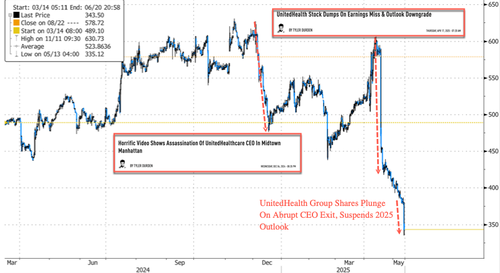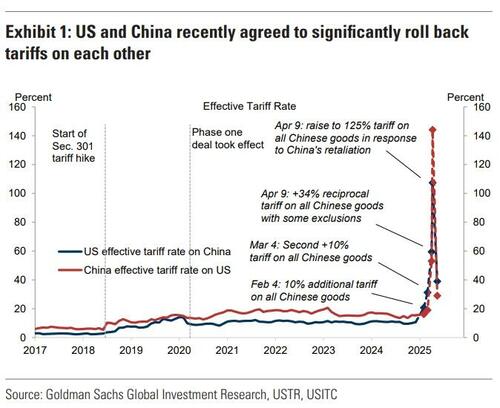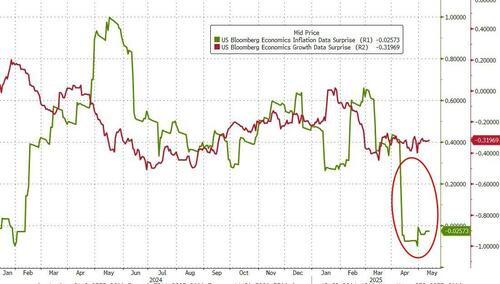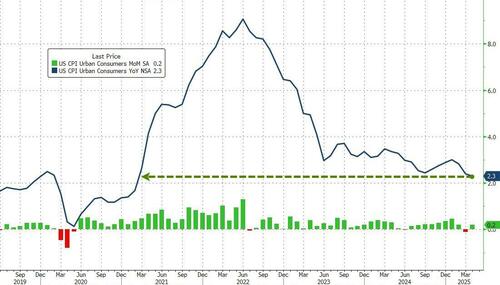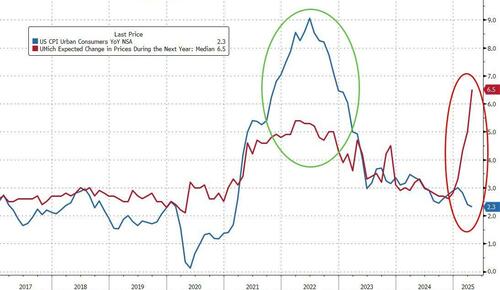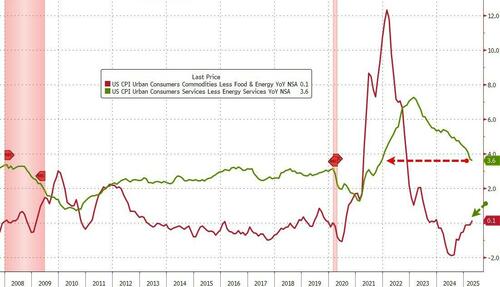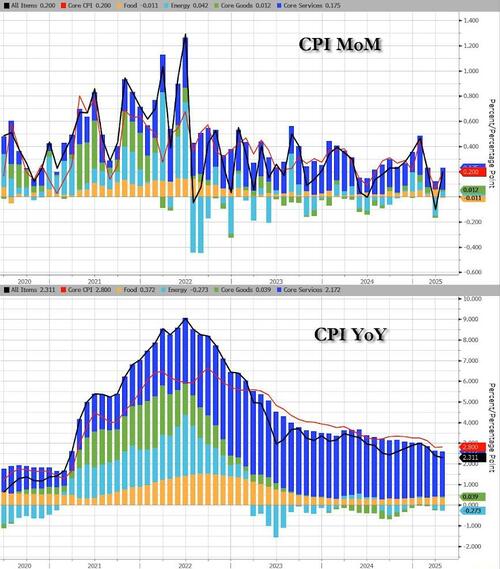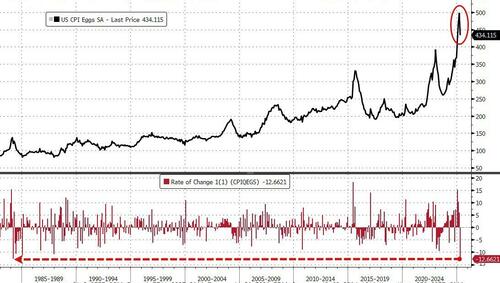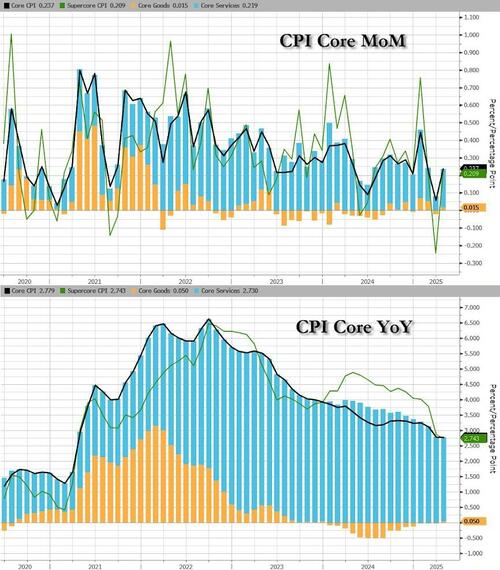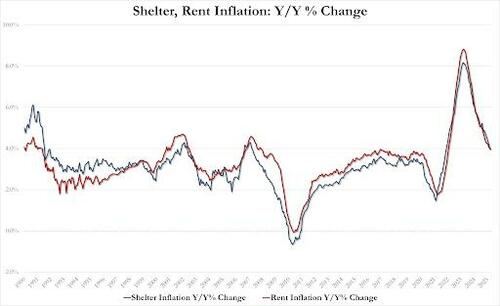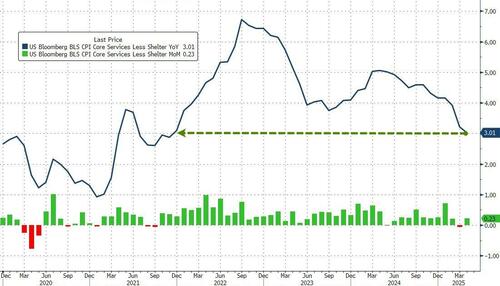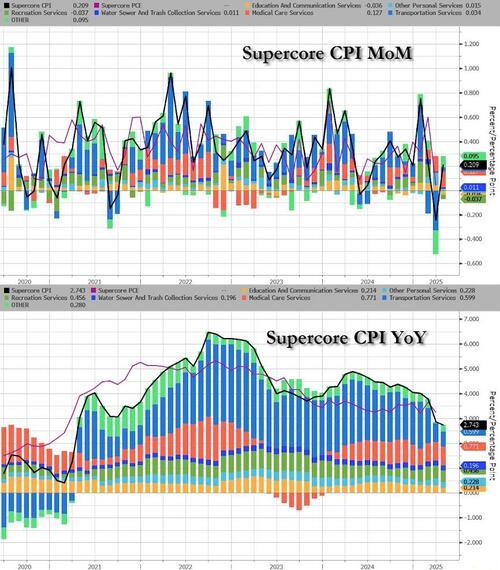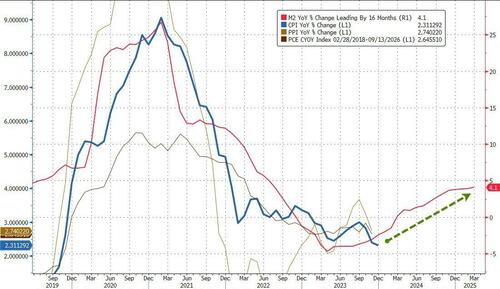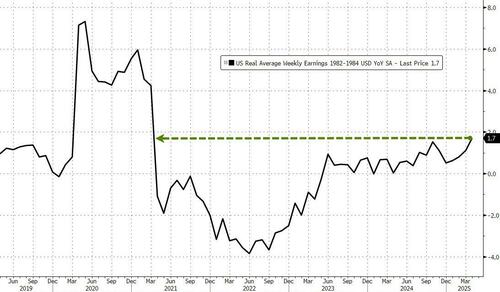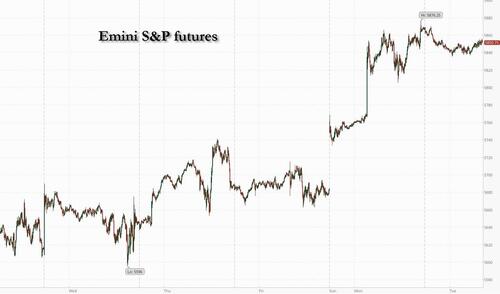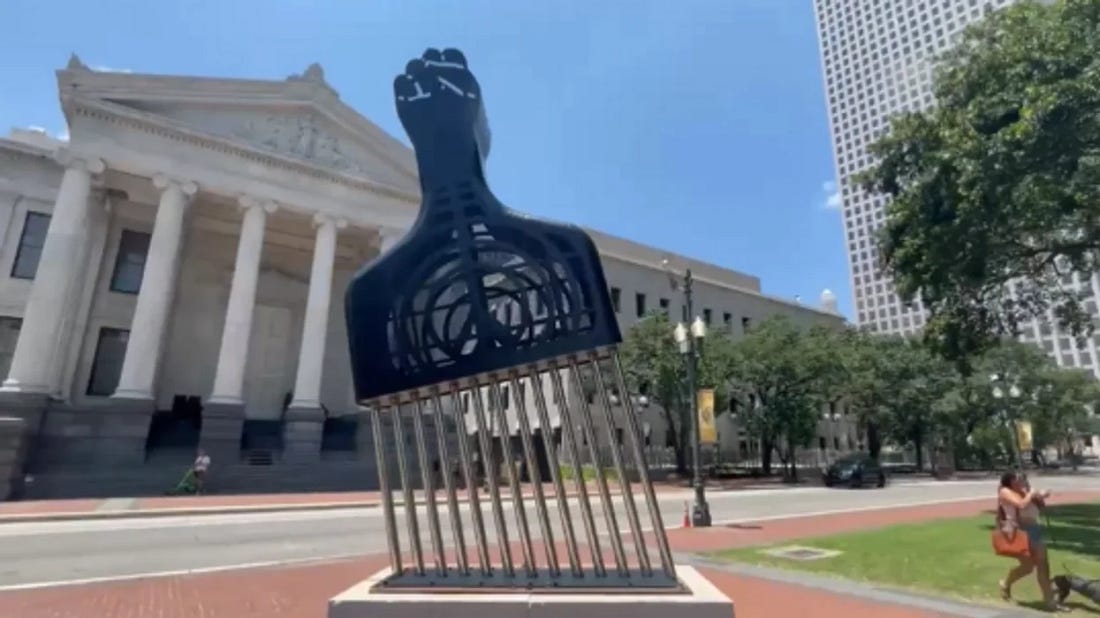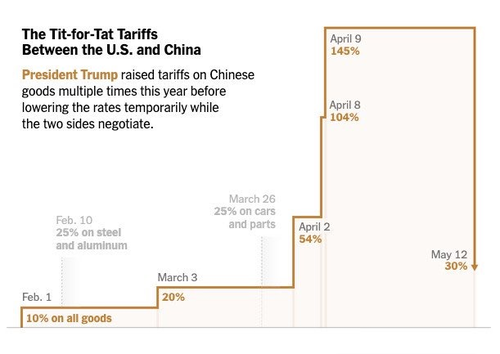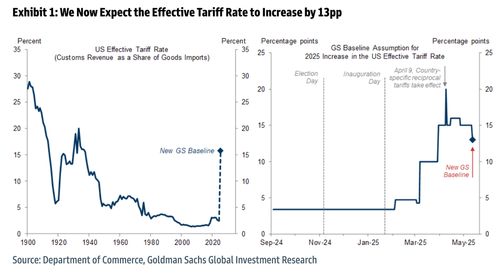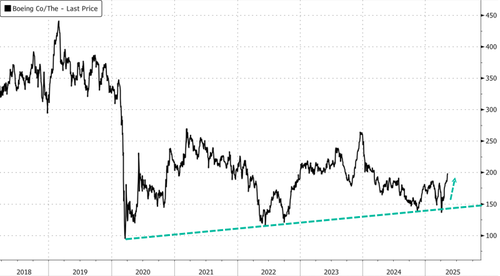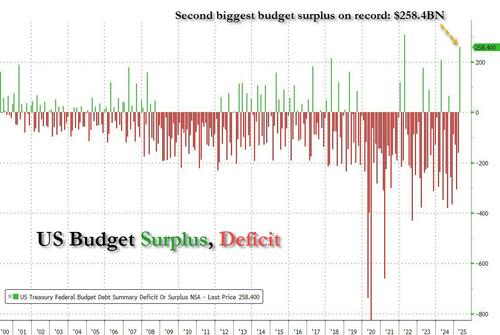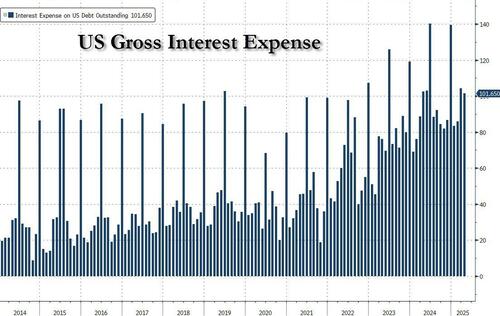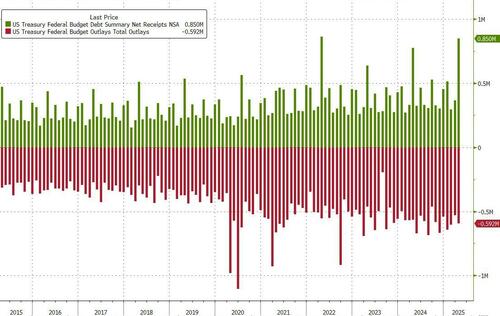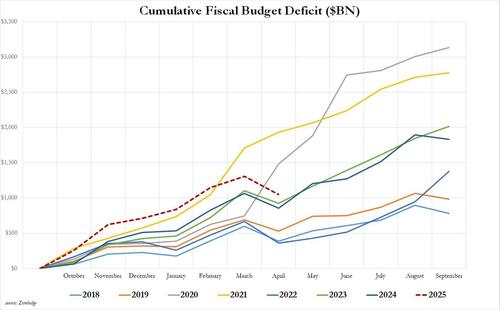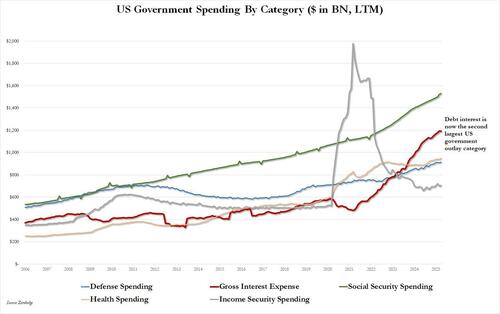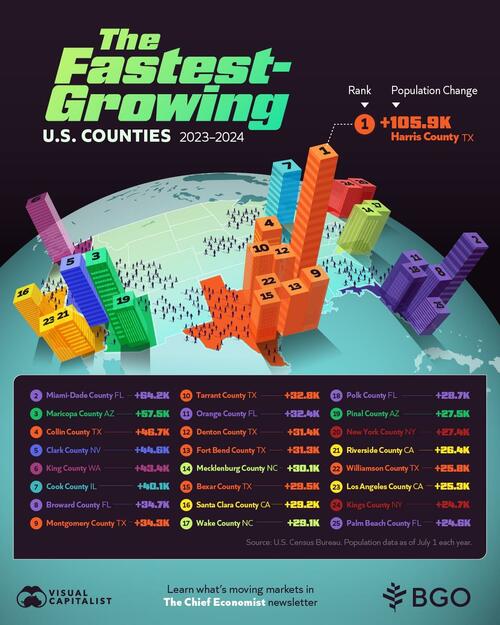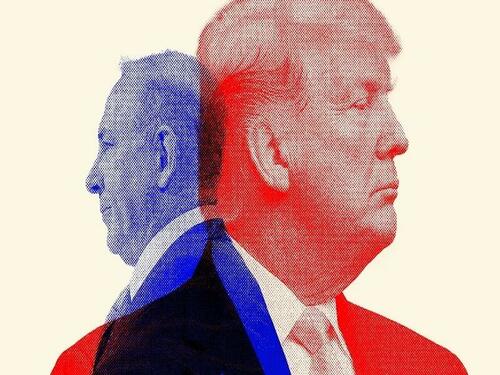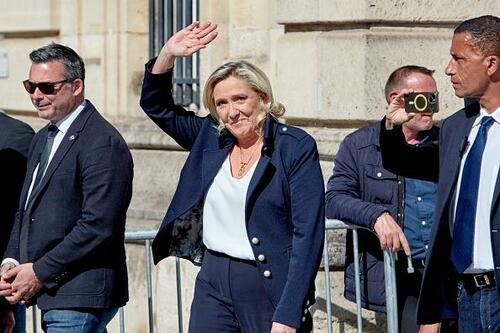No one is forced to be a Christian. But no one should be forced to live according to the "new religion" as though it alone were definitive and obligatory for all mankind.
Distinction Matter - Subscribed Feeds
-
Site: Fr Hunwicke's Mutual EnrichmentS Paul loved his fellow Jews, his 'kinsmen' and believed "the gifts and call of God are irrevocable". He believed that at the End, those among them who had rejected Christ would be brought in to the chosen people. He believed that they were like olive branches which had been cut off so that the Gentiles, wild olive branches, could be grafted in. But, when the fulness of the Gentiles had entered Fr John Hunwickehttp://www.blogger.com/profile/17766211573399409633noreply@blogger.com3
-
Site: Fr Hunwicke's Mutual EnrichmentLex orandi lex credendi. I have been examining the Two Covenant Dogma: the fashionable error that God's First Covenant, with the Jews, is still fully and salvifically valid, so that the call to saving faith in Christ Jesus is not made to them. The 'New' Covenant, it is claimed, is now only for Gentiles. I want to draw attention at this point to the witness of the post-Conciliar Magisterium of theFr John Hunwickehttp://www.blogger.com/profile/17766211573399409633noreply@blogger.com13
-
Site: Fr Hunwicke's Mutual EnrichmentWe have seen that the Two Covenant Theory, the idea that Jewry alone is guaranteed Salvation without any need to convert to Christ, is repugnant to Scripture, to the Fathers, even to the post-Conciliar liturgy of the Catholic Church. It is also subversive of the basic grammar of the relationship between the Old and the New Testaments. Throughout two millennia, in Scripture, in Liturgy, in her Fr John Hunwickehttp://www.blogger.com/profile/17766211573399409633noreply@blogger.com7
-
Site: Fr Hunwicke's Mutual EnrichmentThe sort of people who would violently reject the points I am making are the sort of people who would not be impressed by the the Council of Florence. So I am going to confine myself to the Magisterium from the time of Pius XII ... since it is increasingly coming to be realised that the continuum of processes which we associate with the Conciliar and post-Conciliar period was already in operationFr John Hunwickehttp://www.blogger.com/profile/17766211573399409633noreply@blogger.com0
-
Site: Fr Hunwicke's Mutual EnrichmentIn 1980, addressing a Jewish gathering in Germany, B John Paul II said (I extract this from a long sentence): " ... dialogue; that is, the meeting between the people of the Old Covenant (never revoked by God, cf Romans 11:29) and that of the New Covenant, is at the same time ..." In 2013, Pope Francis, in the course of his Apostolic Exhortation Evangelii gaudium, also referred to the Old Fr John Hunwickehttp://www.blogger.com/profile/17766211573399409633noreply@blogger.com10
-
Site: Fr Hunwicke's Mutual EnrichmentSince the Council, an idea has been spreading that Judaism is not superseded by the New Covenant of Jesus Christ; that Jews still have available to them the Covenant of the old Law, by which they can be saved. It is therefore unnecessary for them to turn to Christ; unnecessary for anybody to convert them to faith in Christ. Indeed, attempting to do so is an act of aggression not dissimilar to theFr John Hunwickehttp://www.blogger.com/profile/17766211573399409633noreply@blogger.com11
-
Site: Mises InstituteThere are no “good wars,” rather, there are wars with varying degrees of destructiveness. The American War Between the States was especially destructive, and the scars have not fully healed 160 years after it ended.
-
Site: LifeNews
In a joyful turn of events during National Nurses Week and just ahead of Mother’s Day, 14 registered nurses at HSHS St. Vincent Hospital’s Women and Infants Center have shared that they’re expecting babies of their own.
These caregivers, who help bring new life into the world every day, are now preparing to welcome little ones into their own families, a press release from HSHS states.
“This is an incredible full-circle moment for many of our nurses, some of which are about to become first time moms themselves,” said Amy Bardon, director of the Women and Infants Center. “Each of these women were already baby experts in their own rights, but for many of them their firsthand experience offering care to an infant, and moms for that matter, is about to further deepen.”
REACH PRO-LIFE PEOPLE WORLDWIDE! Advertise with LifeNews to reach hundreds of thousands of pro-life readers every week. Contact us today.
The announcement has brought a wave of excitement to the hospital community. Eleven of the 14 expecting nurses recently gathered for photos, marking the unique bond they share not only as colleagues but also as mothers-to-be.
“When our expecting nurses are ready to welcome their little ones into the world, they’ll be cared for by their friends and colleagues here at HSHS St. Vincent Hospital, and they find comfort in that,” Bardon added. “But even before labor, these women have already built some really unique bonds with their colleagues, and I love that each of them has the chance to go through this special moment with each other.”
HSHS St. Vincent Hospital, rooted in a mission of faith and healing, is recognized for its excellence in maternal and neonatal care, according to the press release. The hospital holds Advanced Certification in Perinatal Care from The Joint Commission, and its Women and Infants Center also benefits from close proximity to the region’s only children’s hospital and NICU specialists.
LifeNews Note: Grace Porto writes for CatholicVote, where this column originally appeared.

The post Catholic Hospital Has 14 Pregnant Nurses Excite to Have New Babies appeared first on LifeNews.com.
-
Site: non veni pacem
“I said the possible unexpected winner would be Prevost ten days earlier on Piers Morgan’s show. I did my research. No one in the betting circles or in the mainstream media was talking about him. But behind the scenes, there was talk of nothing else. They had two problems that he solves. First, they needed to find someone more organized but ideologically aligned with Francis to finish Bergoglio’s radical reimagining of the Church that has abandoned the Latin Mass and traditional pre-Vatican II Catholicism. Second, since MAGA -traditionalist Catholics have been able to cause such a stir in recent years, the flow of donations from the United States has fallen by almost 50%. The Vatican is not in danger of bankruptcy because it has resources, but it has a flow of donations problem, mainly because of the collapse of funding from the US Church and especially from big donors, like the Papal Foundation. Prevost is perfect. He is American but not too much ; he was born in America, but he is more Peruvian, he is close to Liberation Theology. Bergoglio created and selected him for this position. He has been a cardinal for only two years. He put him in charge of the powerful dicastery of bishops to make him known. An American was needed for donors to have access — so they can have their awards, dinners and papal blessings — and for donations to increase, but the American cardinals said in a press conference that he is the least American of them. His brother told the Daily Mail that they had discussed the name Leone before the conclave began. It is impossible for a virtually unknown American archbishop who has spent most of his life in Peru and has been a cardinal for less than two years to come to a conclave and win in the fourth ballot. It was Bergoglio’s globalist Curia. This election is completely rigged . Some Maga Catholics say he met with Cardinal Burke and said he loves the Latin Mass and everything will be fine, but that is not true at all.”
Video: https://www.gloria.tv/post/nUww9CgEejtp4sod3o7a8krj8
-
Site: LifeNews
The US Department of Health and Human Services (HHS) Office for Civil Rights (OCR) has launched a compliance review to investigate allegations that technicians employed by a hospital faced possible termination due to their objections to performing ultrasounds used in abortion procedures.
“This matter is the second investigation of an entity’s compliance with laws protecting the exercise of conscience that OCR has initiated during President Trump’s second term,” HHS observed Monday in a press release. “Today’s announcement is part of a larger effort to strengthen enforcement of laws protecting conscience and religious exercise.”
“The Department is committed to enforcement of our nation’s laws that safeguard the fundamental rights of conscience and religious exercise,” said Acting OCR Director Anthony Archeval in a statement. “Health care professionals should not be coerced into, fired for, or driven out of the profession for declining to perform procedures that Federal law says they do not have to perform based on their religious beliefs or moral convictions.”
OCR enforces federal conscience and religious freedom protections “in specific programs funded by HHS federal financial assistance,” HHS explains. An individual can file a complaint online or by mail, fax, or e-mail via the website for instructions.
REACH PRO-LIFE PEOPLE WORLDWIDE! Advertise with LifeNews to reach hundreds of thousands of pro-life readers every week. Contact us today.
Recipients of certain federal funds are prohibited from requiring certain individual providers to participate in procedures that violate their faith beliefs or moral convictions, HHS notes, giving an example of “providing or referring for abortions or assisted suicide.”
Other provisions, pertaining to patients, clarify that “certain programs related to mental health treatment, hearing screening programs, occupational illness testing, and compulsory health care services generally are not to be construed to require patients to receive certain health care services to which they object based on religious or moral beliefs.”
“If you believe that your or another person’s conscience, civil rights, or health information privacy rights have been violated, you can file a complaint with OCR,” the federal health agency’s tip portal states.
In April, the Trump HHS initiated its first investigation into allegations that a major pediatric teaching hospital fired a whistleblower nurse who objected to administering puberty blockers and cross-sex hormones to children due to her faith beliefs.
While the department does not identify the facilities involved while investigations are underway, that hospital was later revealed to be Texas Children’s Hospital. Nurse whistleblower Vanessa Sivadge came forward with her allegations in June 2024 and was then terminated the following August.
“I witnessed firsthand how doctors emotionally blackmailed parents by telling them that if they did not affirm their child’s false identity, their child would harm themselves,” Sivadge testified to lawmakers. “In particular, I was saddened to see young girls suffering from profound mental health struggles like depression and anxiety, many of whom had also suffered sexual abuse or trauma, persuaded by doctors at Texas Children’s that a hormone would resolve their gender confusion.”
Archeval said at the time: “The Department will robustly enforce Federal laws protecting these courageous whistleblowers, including laws that protect health care professionals from being forced to violate their religious beliefs or moral convictions.”
LifeNews Note: Susan Berry writes for CatholicVote, where this column originally appeared.

The post Hospital Threatened to Fire Employees Who Refused to Participate in Abortions appeared first on LifeNews.com.
-
Site: Ron Paul Institute - Featured Articles
Because of our strong Christian heritage, most Americans innately believe in being generous to their neighbors. Good neighborliness was central to our country’s founding ethos. Locally and nationally, there are a myriad of groups and organizations that provide support and assistance to people in need. This tradition is an important component of our culture. Consequently, much of our populace believes the United States government is a force for good around the world and an important contributor to world stability. This is a myth.
For decades, this traditional national embrace of generosity towards others has been used by our political and cultural elites to gull the American population into supporting many activities that are anything but generous, and often turn out to be extremely destructive. Over the years, there has been a continuous chorus from the leading elites supporting the false narrative that the United States is doing good around the world—the myth of the “indispensable nation”.
Since the Second World War, American ruling elites have called for numerous military interventions to “save democracy,” protecting some nation from communists, terrorists, fascists, or various reincarnations of Hitler. (Or worse.) The accusations are usually accompanied by shrill calls for the great and indispensable nation to act, to hold the line, or mete out harsh justice to the latest designated evildoer. This nonsense is cheered on by mainstream media outlets. Until recently, average Americans have not had access to any information which would expose the lies and hidden malfeasance behind these claims. Fortunately, thanks to alternative media, that ignorance is rapidly receding.
Americans are now beginning to grasp the fact that most of what we have been told about American foreign policy is materially not true, and that this policy is not benevolent. Contrary to popular imagination, the U.S. has spent decades directly supporting jihadi groups or condoning the support of terrorist groups by our “friends.” The Global War on Terror serves as a convenient excuse for interventions. It has been particularly useful in the Middle East to destroy obstacles to an expansionist Israel.
If we truly wanted to stop terrorism, one of our first priorities should have been to stop funding and arming such groups and inducing our “friends” to stop funding and arming them.
The recent collapse of Syria was a result of the support of the United States, Israel, and fellow NATO member, Turkey, for anti-government jihadi groups. The new leadership of Syria is drawn from the ranks of Al Qaeda. How is that benevolent or “acting as the world’s policeman”? We have been told for decades that Al Qaeda is bad and must be eliminated, and now in Syria we have direct proof of Al Qaeda and related groups being employed as proxies for U.S. “interests.” How is creating another failed state in the Middle East good or in U.S. interests?
It is time to stop allowing ourselves to be duped by deceptive claims of generosity and good intentions, and start to acknowledge and learn from the many disasters our country’s leadership has authored. Jesus told us “you will know them by their fruits.” The list of tragic disasters is quite long, but the following is a sample of the most egregious examples.
During the fighting portion of the Korean War from 1950 to 1953, we killed millions of civilians, and after seven decades, have not officially ended the war. We still have thousands of troops in Korea hindering normal relations between the North and the South. Our troops enforce the blockade which contributes to the starvation of North Korean civilians.
The CIA’s role in the 1953 overthrow of Iran’s duly elected President Mohammad Mosaddegh was the initial cause of strife with Iran before Israel’s Likud government and its cheerleaders decided to start an ever-intensifying campaign vilifying 3000-year old society. (That same campaign has been successful in the destruction of the Palestinians, Iraqis, Afghans, Libyans, Syrians, and other disobedient peoples.)
In the Pacific, the Vietnam War from 1955 to 1975 killed millions in Vietnam and neighboring Cambodia. Cambodia was so destabilized by U.S. bombing that the Khmer Rouge managed to seize control of the ravaged country and killed over one third of their population, on top of the people killed by the U.S. military. Most of what we were told about that war was untrue from the beginning.
Our bad behavior has not been exclusive to the Eastern Hemisphere. Closer to home, numerous American-backed coups and interventions in Central and South America caused instability that continues to trouble those regions today.
In April 1961 the CIA engineered and supported the Bay of Pigs Invasion of Cuba. It was a complete catastrophe and cemented the Castros’ control, ensuring they ruled until their deaths six decades later. The inexplicable U.S. blockade still causes suffering for the Cuban people.
The Somalian Civil War has been ebbing and flowing since the 1980s, thanks to U.S. money and weapons.
The First Persian Gulf War (1990–1992) was followed by crushing sanctions which caused many deaths and destruction in Iraq, and turned out to be a prelude for the 2003 Iraq invasion.
U.S. intervention in the Kosovo War (1998–1999) killed many civilians. What the military leaders promoting that cruel bombing campaign claimed would last a week at most turned out to be 16 months of death and destruction. It is hard to tell what was accomplished except proving to the Russians that NATO was not a defensive organization, as promised by the George H. W. Bush and Clinton administrations. This is one of the early provocations that eventually led to the present Russo–Ukrainian War.
The 2001 Afghanistan War was the result of America’s decision in 1979 to support Sunni Jihadists’ entry into Afghanistan as a means of destabilizing the Afghan government. Zbigniew Brzezinski, Carter’s national security advisor, wrote that year, “We now have the opportunity of giving to the USSR its Vietnam War.” The plan was designed to force Soviet intervention to protect their southern flank. To the applause of the neocons, the Reagan administration decided to arm and finance the same organizations to fight the Soviets. When the Soviets departed, the freedom fighters—the Taliban—took over. So of course, after September 11, 2001, the U.S. couldn’t resist the allure of another intervention and fought them for 20 years. After years of dishonest claims of success, the U.S. retreated in defeat, leaving death and destruction for the unfortunate Afghans who aided us during the occupation. Sadly, as Scott Horton has pointed out in Fool’s Errand, beginning in 2001 and 2002, the Taliban offered many times to surrender but was continuously rebuffed by Washington.
The Iraq War of 2003 started with the standard-issue vilification campaign. After much death and destruction, there was no evidence of weapons of mass destruction or of support for Al Qaeda terrorists. The many neocon assertions made to justify the war turned out to be false. Nearly a quarter of a century later, we still have troops in Iraq, and the region has yet to recover.
After the U.S. invaded Iraq in 2003, Libya signed a cooperation treaty with the George W. Bush administration agreeing to give up their nascent nuclear program and vowed to stop their support for terrorists. The neocons gave victory whoops. Just a few years later the same crowd cranked up the familiar demonization campaign and bombed the Libyan government into oblivion. The remains of the country are now fiercely disputed by rival warlords. The Libyan double-cross is a big reason that Iran will not give up its missiles. Most of the American public is not aware of this betrayal, but the rest of the world is—especially the Iranians.
The Syrian Civil War that started in 2011 was fueled by covert American support. The U.S. claimed to support “moderate freedom fighters” who turned out to include Al Qaeda–allied jihadists. That war appears to have ended, due to the recent collapse of the Syria government; the country is now ruled by former terrorists—but there will be more war coming from this sad example of U.S. cruelty. The American War Party will not let a good tragedy go to waste.
The Russo–Ukrainian War is a continuation of the conflict that arose from the 2014 U.S.-backed coup in Ukraine and is the result of decades of American provocation. These provocations have been carefully documented by Scott Horton in his book Provoked, which shows how decades of policy choices in Washington led to the war in Ukraine; the former CIA analyst Larry Johnson has listed the more recent provocations. After failed treaties and ceasefire agreements, in 2022 Russia invaded. Millions have been killed, wounded, and driven from their homes. The country is being wrecked. To this day, the U.S. is still sending weapons, money, and other assistance to encourage the continuation of that war.
In Yemen, the U.S. is still bombing Houthis after all these years. In 2015, we aided the Saudi bombing campaign. Now the Houthis’ crime is to protest the starvation and killing of the Gazans. The U.S. has spent billions on this project killing civilians. The past year of the failed U.S. military bombing campaign is proof that attacks on much larger Iran would be a complete disaster.
Finally, the Israeli genocide in Gaza escalated intensely in 2023. To this day the U.S. is sending weapons and money to Israel which add to the starvation, destruction, and death. This is in no way generous and benevolent.
Fair use excerpt. Read the whole article here.
-
Site: AsiaNews.itThe US president is in Saudi Arabia, the first stop on a regional trip that includes the United Arab Emirates and Qatar (but not Israel). His agenda is centred on business and billion-dollar deals (including weapons), relegating other issues to the margins. Economics and Saudi money overshadow human rights issues and environmental concerns linked to the Red Sea megaproject.
-
Site: Catholic ConclaveGerman Archbishop Gänswein wants to play tennis against the PopePope Leo is known for his strong backhand, and Archbishop Gänswein also loves tennis. In 2006, he was secretly photographed playing near the Vatican – now he would like to compete against thThe former confidant of Pope Benedict XVI, Archbishop Georg Gänswein, would like to play tennis with Pope Leo XIV. "Anytime and with pleasure!" Catholic Conclavehttp://www.blogger.com/profile/06227218883606585321noreply@blogger.com0
-
Site: LifeNews
House Republicans unveiled sweeping legislation late Sunday that would defund Planned Parenthood for the next decade and prohibit taxpayer funding of so-called “gender transition procedures” for minors under Medicaid.
The bill, part of a broader GOP fiscal package aligned with President Donald Trump’s agenda, includes multiple provisions long sought by the pro-life movement.
Section 44126 bars any federal funds from going to “prohibited entities” that perform abortions outside Hyde Amendment exceptions, which only allow for abortions in cases of rape, incest, or when the mother’s life is at risk.
The ban would remain in place for ten years from enactment.
“Defunding abortion-giant Planned Parenthood, and other abortion facilities, has been a goal of the pro-life movement for decades,” said CatholicVote Director of Government Affairs Tom McClusky. “We have exposed their compliance with fraud, statutory rape, baby body part trafficking, and numerous other abuses, yet never seemed to move Congress to defund. This Congress, and President Trump, deserve high praise for delivering on an overdue promise from the Republican Party.”
REACH PRO-LIFE PEOPLE WORLDWIDE! Advertise with LifeNews to reach hundreds of thousands of pro-life readers every week. Contact us today.
Planned Parenthood reported over 400,000 abortions between 2023 and 2024—an increase of 9,515 aborted babies from the previous year. At the same time, the group’s taxpayer funding surged by over 13%, reaching $792.2 million.
According to Live Action, Planned Parenthood has aborted an estimated 7.1 million babies since 2000 and now commits roughly 40% of all US abortions.
Pro-life legislators have rallied behind the measure. As Daily Caller first reported, a coalition of 183 state lawmakers signed a letter to Congress urging Republicans to use the budget reconciliation process to defund Planned Parenthood.
“[W]e are deeply concerned with the way that big abortion businesses like Planned Parenthood prey on unborn children and hurt women, all while receiving hundreds of millions of dollars from American taxpayers,” the letter reads. “With a Republican trifecta in Washington, it is time to use the budget reconciliation process to defund big abortion providers like Planned Parenthood.”
The legislation also seeks to block federal financial participation in Medicaid and the Children’s Health Insurance Program (CHIP) for “gender transition procedures” performed on minors. The bill would prohibit taxpayer dollars from covering such interventions, including cross-sex hormones and surgeries.
A 2025 American Principles Project report found that $24.6 billion in taxpayer dollars is eligible to cover such procedures, with another $11.1 billion potentially at risk under expanded coverage rules.
Public opinion appears to support the measure. An April 2025 poll found that 65% of likely voters oppose using federal tax dollars to fund gender transitions for minors.
The moves come amid mounting scrutiny over Planned Parenthood’s practices.
Earlier this month, the Department of Health and Human Services released a report identifying Planned Parenthood as a “leading provider” of cross-sex hormones to children. Similarly, Live Action’s latest undercover investigation exposed Planned Parenthood facilities in multiple states for offering these drugs to minors with no therapy, no in-person evaluation, and no parental consent.
The bill originated in the House Energy and Commerce Committee, which was tasked with identifying at least $880 billion in spending cuts to offset new federal priorities. The committee has jurisdiction over key programs, including Medicaid.
House GOP leaders reportedly plan to bring the bill to a floor vote on May 26, with markup sessions scheduled Tuesday.
Rep. Brett Guthrie, R-KY, chair of the House Energy and Commerce Committee, defended the legislation in a Wall Street Journal op-ed.
“Undoubtedly, Democrats will use this as an opportunity to engage in fear-mongering and misrepresent our bill as an attack on Medicaid,” Guthrie wrote. “In reality, it preserves and strengthens Medicaid for children, mothers, people with disabilities and the elderly—for whom the program was designed.
LifeNews Note: Elise DeGeeter writes for CatholicVote, where this column originally appeared.

The post Republican Reconciliation Bill Would Defund Planned Parenthood Abortion Biz appeared first on LifeNews.com.
-
Site: Mises InstituteA free market economy does not generate jobs or money. Instead, it creates wealth through exchange and production. Government intervention, contrary to what mainstream economists believe, does not enhance wealth, but instead destroys it.
-
Site: AsiaNews.itIn West Java province, an explosion occurred during the controlled detonation of old bombs. A group of civilians, present in the restricted area without authorisation, were caught in the blast—reportedly scavenging for bomb fragments to sell. The explosion is the latest in a long series of similar incidents; another occurred on 9 May. These events raise concerns over the security of military sites.
-
Site: AsiaNews.itOn the occasion of the conclave, the Chinese Catholic website has retraced the historical origins of the termjiaohuang, used to refer to the Pope. It was first introduced by the great missionary Giulio Aleni in his 1623 geography treatiseRecord of Foreign Lands. More recently, however, the Catholic community has also begun promoting the termjiaozong, which is seen as more aligned with the spiritual role of the successor of Peter.
-
Site: Zero HedgeUnitedHealth Group Shares Plunge On Abrupt CEO Exit, Suspends 2025 OutlookTyler Durden Tue, 05/13/2025 - 08:55
Shares of UnitedHealth Group tumbled in premarket trading after the insurer announced the sudden resignation of CEO Andrew Witty and the suspension of its 2025 financial outlook.
UnitedHealth Group appointed Stephen Hemsley, its board chairman and former CEO (2006-2017), as its new CEO, replacing Andrew Witty, who stepped down for personal reasons.
"We are grateful for Andrew's stewardship of UnitedHealth Group, especially during some of the most challenging times any company has ever faced," Hemsley said, adding, "The Board and I have greatly valued his leadership and compassion as chief executive and as a director and wish him and his family the best."
The major health insurer also suspended its 2025 financial outlook, citing higher-than-expected medical expenditures:
Additionally, the company suspended its 2025 outlook as care activity continued to accelerate while also broadening to more types of benefit offerings than seen in the first quarter, and the medical costs of many Medicare Advantage beneficiaries new to UnitedHealthcare remained higher than expected.
In April, UnitedHealth Group reported weaker-than-expected Q1 results and issued a significant downward revision to its full-year guidance, citing higher-than-expected Medicare needs. This was the insurer's first earnings miss in over a decade.
UnitedHealth Group expects to return to growth in 2026...
"UnitedHealth Group has tremendous opportunities to grow as we continue to help improve health care and to perform to our potential — and, in so doing, return to our long-term growth objective of 13 to 16 percent," the new CEO said.
As of Monday's close, UnitedHealth Group shares are locked in a bear market, down 25% for the year. News of the sudden CEO resignation and suspended outlook pushed the stock down another 10% in premarket trading—sending shares to a four-year low if losses hold into the cash session.
Just to clarify: UnitedHealthcare is the health benefits business of UnitedHealth Group.
In premarket trading, the shares of peers Elevance Health, CVS Health, and Humana all fell between 2 and 4%. Cigna and Centene fell between 1% and 2%.
Here are the first takes on the news via Wall Street banks (courtesy of Bloomberg):
Mizuho, Ann Hynes (outperform)
-
Says the suspension of the guidance is surprising
-
"Given the recent challenges the company has faced, a change in management was expected"
Leerink Partners, Whit Mayo (outperform)
-
Says the suspension of the 2025 guide due to a continuation of excessively high care activity "is more concerning and likely to weigh considerably on forward forecasts and the valuation"
-
Adds that the CEO transition to former head Stephen Hemsley "doesn't strike us terribly surprising in light of recent business developments and deterioration in investor trust"
-
"Perhaps the suspended guide is simply for Mr. Hemsley to settle into the role, figure out trend, and begin the process of reestablishing some credibility with the investor community"
Bloomberg Intelligence, Glen Losev
- Says the outlook suspension is "is puzzling but is likely a part of a broader effort to turn the page"
RBC Capital Markets, Ben Hendrix (neutral)
- "While UNH cites personal reasons for Witty's departure, we are not overly surprised to see a change in guard amid weaker Medicare Advantage performance and critical press headlines emerging late last year"
On Monday, President Trump pushed ahead with his pledge to eliminate drug industry middlemen, which sent shares of Cigna, CVS Health, and UNH lower.
The new NPC narrative pic.twitter.com/NadxAuiYj5
— Planet Of Memes (@PlanetOfMemes) May 12, 2025Rough times for the healthcare industry...
-
-
Site: Zero HedgeDespite Mainstream Panic, US Consumer Price Inflation Tumbles To Lowest In Over 4 YearsTyler Durden Tue, 05/13/2025 - 08:40
While today's CPI will be far less relevant now that the entire macro picture has been reset after this weekend's trade war truce - which cut tariffs between US and China by 115% for 90 days...
...thus making any pre/post CPI number comparisons meaningless apples to oranges, the machines will certainly be reacting to what Bloomberg prints in the flashing red headline at 8:30am ET.
As we detailed here, higher-than expected inflation data is likely to accelerate the increase in yields spurred by the easing in trade tensions with China.
As Bloomberg's Alyce Andres notes, survey data ahead of Tuesday’s April CPI report sends a clear message that firms passed rising tariff-linked costs on to consumers.
Higher Prices
-
ISM Manufacturing prices expanded to 69.8, the highest since June 2022.
-
ISM Services ticked up to 65.1 in April, the highest since January 2023.
-
S&P Global US Manufacturing firms increased their output prices by the greatest degree since early 2023.
-
S&P Global US Services prices advanced.
-
Richmond Fed manufacturing showed prices received rose to 2.65 from 2.34 in March.
-
New York Fed manufacturing prices received edged up to 28.7 from 22.4 in March.
-
Philadelphia Fed manufacturing report showed prices received gained to 30.7 compared to 29.8 in March.
-
Kansas City Fed manufacturing prices received surged to 29, up from 15 in March.
-
Kansas City Fed non-manufacturing showed selling prices rose in April.
-
Dallas Fed manufacturing outlook report showed prices received for finished goods advanced to 14.9, up from 6.3 in March.
-
Dallas Fed services selling prices rose to 8.4 from 5.2 in the prior month.
-
Chicago PMI showed prices expanded at a faster pace in April.
Lower Prices:
-
New York Fed services report showed prices received declined to 26.0 from 28.7 in March.
-
Philadelphia Fed non-manufacturing data reflected a plunge in prices received to -0.1 from 8.4 in in the prior month.
-
Richmond Services prices received nudged down to 3.03 compared to 3.68 in March.
Optically, inflation indicators (hard, not soft survey) have notably deflated in the last month...
Source: Bloomberg
So, what did we get - did the 'soft' survey data once again completely decouple from the reality of 'hard' actual data?
SHOCKER - Despite the panic from the establishment, headline CPI disappointed, rising 0.2% MoM (below the +0.3% exp), pulling the headline down to +2.3% YoY (below the 2.4% exp) - the lowest since February 2021...
Source: Bloomberg
That's quite a difference from the Democrat-sponsored surge in UMich inflation expectations (something it appears Democrats were unable to see or fear in 2021/2022 when President Biden was printing trillions in stimmies to save his base from actually working for a living)...
Source: Bloomberg
Under the hood, commodity prices just inched back into inflation (+0.1% YoY) while Services inflation continues to slide...
Source: Bloomberg
Headline CPI 0.2% MoM. Here are the details:
-
The index for shelter rose 0.3 percent in April, accounting for more than half of the all items monthly increase.
-
The energy index also increased over the month, rising 0.7 percent as increases in the natural gas index and the electricity index more than offset a decline in the gasoline index.
-
The index for food, in contrast, fell 0.1 percent in April as the food at home index decreased 0.4 percent and the food away from home index rose 0.4 percent over the month.
But Core Services rose MoM...
Source: Bloomberg
Egg prices - so much in focus during Trump's first few weeks after Biden's shitshow - plunged 12.7% MoM... the biggest MoM drop since March 1984...
Source: Bloomberg
Core CPI also rose 0.2% MoM (below the 0.3% exp) leaving it up 2.8% YoY as expected (lowest since April 2021)...
Source: Bloomberg
Source: Bloomberg
Core CPI +0.2% MoM. Indexes that increased over the month include household furnishings and operations, medical care, motor vehicle insurance, education, and personal care. The indexes for airline fares, used cars and trucks, communication, and apparel were among the major indexes that decreased in April. Here are the details:
-
The shelter index increased 0.3 percent over the month.
-
The index for owners’ equivalent rent rose 0.4 percent in April and the index for rent increased 0.3 percent.
-
The lodging away from home index fell 0.1 percent in April.
-
Shelter inflation 0.34% MoM, and 3.99% YoY, unch from a month ago and the lowest since Nov 2021
-
Rent inflation 0.27% MoM, and 3.98% YoY, down from 3.99% in March and the lowest since Jan 2022
-
-
The index for household furnishings and operations increased 1.0 percent in April, after being unchanged in March.
-
The motor vehicle insurance index rose 0.6 percent in April.
-
The index for education increased 0.1 percent over the month, as did the index for personal care.
-
In contrast, the airline fares index fell 2.8 percent in April, after declining 5.3 percent in March.
-
The index for used cars and trucks fell 0.5 percent over the month, and the indexes for communication and apparel also declined.
-
The new vehicles index and the recreation index were unchanged in April.
-
The medical care index increased 0.5 percent over the month.
-
The index for hospital services increased 0.6 percent in April and the index for physicians’ services rose 0.3 percent over the month.
-
The prescription drugs index rose 0.4 percent in April.
And drilling down even more, the so-called SuperCore CPI (Services Ex Shelter) dropped to +3.01% YoY - the lowest since Dec 2021...
Source: Bloomberg
Recreation Services and Education costs are deflating...
Source: Bloomberg
Finally, as Goldman noted ahead of the print, whatever we do learn about tariff-related inflation today lags the rapidly-changing policy reality... so choose the size of the salt crystal to take as you react to the algos initial reaction to this data.
Is the inevitable trajectory of CPI higher given the recent surge in M2...
Source: Bloomberg
Real average weekly earnings rose 1.7% YoY - the best growth in wages since March 2021...
Source: Bloomberg
Brace for an avalanche of this statement repeated ad nauseum all day from establishment economists - "...we're sure the inflation from tariffs will hit next month..."
The new narrative: "lack of tariff inflation is transitory"
-
-
Site: LifeNews
On Monday, Planned Parenthood released its 2024 annual report. These annual reports are often helpful to pro-lifers.
However, this year, Planned Parenthood’s annual report takes on additional significance, as pro-lifers are currently making a strong push to defund Planned Parenthood through the budget reconciliation process. Fortunately, this report should bolster pro-life efforts. That is because, once again, it provides extremely solid evidence that Planned Parenthood continues to prioritize abortion at the expense of health care.
Overall, this new report shows that Planned Parenthood performed 402,230 abortions in 2023. This marks the first time that Planned Parenthood has reported performing over 400,000 abortions in a given year — and represents an all-time high number for the organization. Overall, Planned Parenthood performs over 39 percent of the abortions that take place in the United States.
Please follow LifeNews.com on Gab for the latest pro-life news and info, free from social media censorship.
The report also indicates that Planned Parenthood continues to cut back on various health services. Between 2023 and 2024, primary care visits fell by 13.7 percent, pap tests fell by 12.3 percent, cancer screenings fell by 8.1 percent, and UTI treatments fell by 45.0 percent. Though Planned Parenthood did report an increase in adoption referrals in 2024, it should be noted that for every adoption referral that took place in 2023, Planned Parenthood still performed over 187 abortions.
All of this is consistent with Planned Parenthood’s long-term trend of performing more abortions and providing fewer health services. In fact, during the past ten years, the number of abortions performed by Planned Parenthood has increased by over 22 percent. Meanwhile, cancer screenings fell by more than 54 percent and prenatal services declined by more than 62 percent during the same time period.
Although Planned Parenthood cut back on several health services in 2023, it continues to receive increases in government funding. The report indicates that, in fiscal 2023, it received $792.2 million in government grants and reimbursements. This is a whopping 13.3 percent increase from 2022. This is further evidence that the Biden administration prioritized funding for Planned Parenthood.
With Republicans controlling the White House and both houses of Congress, pro-lifers have a unique opportunity to defund Planned Parenthood. Planned Parenthood’s annual report indicates it receives 39 percent of its revenue from the government. Thus, a federal funding cutoff would do substantial harm to the abortion giant. House Republicans unveiled legislation on Sunday that would defund Planned Parenthood. Let’s hope this report gives Congressional Republicans the ammunition they need to continue their efforts and finally end taxpayer funding for Planned Parenthood.
LifeNews Note: Michael J. New is an assistant professor at the Busch School of Business at The Catholic University of America and is an associate scholar at the Charlotte Lozier Institute. Follow him on Twitter @Michael_J_New

The post Planned Parenthood Kills More Babies and Helps Fewer Women Than Ever Before appeared first on LifeNews.com.
-
Site: OnePeterFive

Last week I marveled at the liturgical providence of the Conclave – it took place between the “two” Good Shepherd Sundays in the Latin rites each year. The first, in the ancient Roman Rite, took place on the Sunday before the Conclave began. The second, in the Novus Ordo Missae, took place on the Sunday after Leo XIV was elected. Do you remember what the Sunday 1st Reading was on the Sunday…
-
Site: Zero HedgeFutures Dip As Torrid Squeeze Pauses Ahead Of CPI ReportTyler Durden Tue, 05/13/2025 - 08:24
US equity futures are modestly lower ahead of today's CPI report, but well off session lows, as markets take a slight pause following yesterday’s surge and as trade war truce euphoria gives way to lingering concerns about inflation and economic growth. As of 8:00am ET, S&P and Nasdaq 100 futures were down 0.2% with Mag7 and Semis names weaker pre-mkt, pulling the index lower. UnitedHealth Group sank 10% in pre-market trading after suspending its 2025 outlook. In the latest trade war news, US reduced the tariff on ‘de minimis’ shipments from China, per Reuters, from 120% to 54%, while China reversed its ban on Boeing jets. Appetite for safer assets picked up again, with Treasury yields falling and gold prices on the rise. The dollar slipped after gaining more than 1.4% yesterday, its strongest day since Nov 6, 2024, the day after the election. Today’s macro data focus is on CPI where the YoY numbers are expected to remain flat MoM despite an acceleration in the MoM prints. Earnings prints are not expected to be market moving today.
In premarket trading, Magnificent Seven stocks were mostly lower with the exception of NVDA (Tesla -0.3%, Meta Platforms -0.2%, Microsoft -0.3%, Apple -0.3%, Alphabet -0.2%, Amazon +0.02%, Nvidia +0.2%). Coinbase Global (COIN) climbs 9% after S&P Dow Jones Indices said the company will join the S&P 500 Index before trading opens May 19. UnitedHealth Group shares drop 10% after the health insurer suspended its 2025 outlook and said CEO Andrew Witty is stepping down for personal reasons, effective immediately. Here are some more notable premarket movers:
- 3D Systems (DDD) sinks 22% after the 3D-printer maker reported products revenue for the first quarter that missed the average analyst estimate.
- Arrowhead Pharmaceuticals (ARWR) climbs 6% after the drug developer reported earnings per share for the second quarter that was ahead of Wall Street’s expectations.
- Enphase Energy (ENPH) drops 5% after BMO cut its recommendation on the solar energy equipment manufacturer to underperform, citing planned Federal Government tax changes as a headwind for residential solar.
- On Holding (ONON) rises 5% after the company nudged its sales growth forecast higher as demand for the Swiss sneaker maker’s high-priced footwear remained strong despite economic uncertainty.
- Pinterest (PINS) declines 2% after the Information reported Google may unveil next week a feature that shows images designed to give people ideas for fashion and other types of designs, citing a person familiar with the matter
- Rigetti Computing Inc. (RGTI) tumbles 11% postmarket after the quantum computing firm’s 1Q revenue missed expectations.
- Other quantum computing stocks are down: Quantum Computing Inc. (QUBT) -3%, D-Wave Quantum (QBTS) -3%
The powerful surge in stocks following the US-China trade truce, which sent the S&P 3.3% higher and erasing all post-Liberation day losses, caught out bearish investors who are now left chasing the rally, as well as hedge funds that were mostly short US equities, according to strategists. Bank of America’s latest fund manager survey — conducted before the US-China trade breakthrough — is “bearish enough to suggest pain trade modestly higher,” Michael Hartnett said. BBVA strategists said that hedge funds’ net leverage is near five-year lows and mostly short US equities, adding to the squeeze.
“Yesterday’s move was warranted,” said Andrea Gabellone, analyst at KBC Securities. “But I need more to get more fundamentally constructive.”
Still, Tuesday’s slight pullback suggests trade and economic concerns are lingering, despite the US-China truce. The dollar is a bit weaker, and gold is higher, as investors await April’s CPI number for a sense of whether Trump’s tariff back-and-forth is fueling inflation. Boeing will be in focus after China removed a ban on airlines taking delivery of its planes.
“The challenges are not over,” said Frederique Carrier, investment strategy head at RBC Wealth Management. “The de-escalation was a lot stronger than even the best hopes, but you have to remember that the US economy still faces average effective tariffs of more than 13%.”
There’s also plenty from strategists to digest. Goldman’s David Kostin raised his 12-month target for the S&P 500 to 6,500 from 6,200, implying a gain of about 11%. But he’s still somewhat cautious, seeing an “impending slowdown in economic and earnings growth.” Meanwhile, the market rebound prompted Mark Haefele, chief investment officer at UBS Global Wealth Management, to cut US stocks to neutral from attractive, saying the risk-reward was now more balanced. Uncertainty is still high, he wrote in a note on Tuesday, and investors will focus on whether a lasting trade agreement can be forged between the two countries.
In Europe, the Stoxx 600 rises 0.2%. Health care stocks are among the biggest gainers, with Bayer shares rising 8% after earnings beat expectations. Insurance names provide a drag after disappointing numbers from Munich Re. Here are the biggest movers Tuesday:
- Renewable energy stocks rally in Europe on Tuesday after US House Republicans proposed a phase-out of incentives to develop clean-energy projects that was better than feared, according to analysts
- Bayer shares jump as much as 10%, the most since August, after the German conglomerate reported better-than-expected earnings and sales for the first quarter
- Grifols gains as much as 6.5% after the the Spanish blood-plasma company delivers results above expectations in the first quarter and maintains its full-year guidance
- Entain rises as much as 6.3% in London after UBS raised its recommendation to buy, saying the bookmaker has been steadily progressing operationally over the past year, yet the shares have underperformed the sector
- RS Group rises as much as 7.5% as BofA Global Research raises its recommendation on the electronics distributor to buy due to an automation recovery and cost savings that support margins
- Munich Re falls as much as 5.4% after first-quarter profit slumped because of claims linked to the Los Angeles wildfires and prices for renewals declined
- Hannover Re shares declined 3.8%, the second-worst performer on the Stoxx 600 Insurance Index, after the German reinsurer reported what JPMorgan says are “not a particularly pretty set of numbers”
- DCC shares drop as much as 4.9%, the biggest fallers in the FTSE 100 Index, after the conglomerate’s earnings fell short of expectations, with analysts pointing to weakness in its technology business due to weak demand
- GEA Group drops as much as as 3.6% following a double-downgrade to underperform from buy at BofA, which cites a full valuation and weaker food and beverage capex cycle in the firm’s major markets
- Fraport shares fall as much as 4.7%, the most in five weeks. Higher costs in Aviation and a one-off impact from security drove a miss on Ebitda in the first quarter for the operator of Frankfurt Airport
- Alfen slumps as much as 26%, the most since June 2024, after the energy equipment company warned that its full-year revenue is likely to come in at the lower end of the current guidance range
Earlier in the session, Asian stocks eked out gains, with sentiment getting a boost after the world’s two largest economies agreed to a trade truce. Meanwhile, shares in Hong Kong fell after a rally on Monday. The MSCI Asia Pacific Index jumped as much as 1%, before trimming its gains to 0.2%. TSMC, Recruit and Toyota were major contributors to the gauge’s gains. Japanese shares were among the biggest gainers in the region, with the Topix index posting its longest winning streak in nearly 16 years. Benchmarks also advanced in Taiwan and Malaysia. Still, shares fell in Hong Kong as the trade agreement is seen as reducing Beijing’s need to announce any large stimulus. Stocks in mainland China pared early gains to trade little changed. Meanwhile, gauges in India also fell as the tech sector’s rally cooled.
In FX, the Bloomberg Dollar Spot Index slipped as much as 0.3% as positioning in the options market continued to lean against the currency. Kristoffer Kjaer Lomholt, head of FX and corporate research at Danske Bank A/S, said the greenback’s 1% surge on Monday was “all about the unwind of the post-Liberation day trades” even though unlike other assets which have recovered all losses since Liberation Day, the dollar remains the only major asset class that is decidedly lower. The Swiss franc, Swedish krona and Aussie dollar are the best performing G-10 currencies. The Canadian dollar lags with a 0.1% fall against the greenback.
Treasuries also reversed some of the Monday moves. The policy-sensitive US two-year yield fell three basis points after surging 12 basis points amid speculation the tariff truce would bolster the world’s biggest economy. 10-year yields dropped 3 bps to 4.45% and again reversing some of Monday’s move. Bunds fall, with German 10-year yields rising 3 bps. UK 10-year borrowing costs add 2 bps but short end yields are lower after British businesses cut jobs for a third straight month in April.
In commodities, US crude WTI futures rise 0.5% to $62.25. Spot gold has also pared some of Monday’s fall, rising $18 to around $3,254/oz.
Looking to the day ahead now, and the main highlight will be the US CPI release for April. Otherwise, we also got UK unemployment for March and the German ZEW survey for May. From central banks, we’ll hear from the ECB’s Escriva, Makhlouf and Knot, along with BoE Governor Bailey and the BoE’s Pill.
Market Snapshot
- S&P 500 mini -0.2%,
- Nasdaq 100 mini -0.2%,
- Russell 2000 mini -0.1%
- Stoxx Europe 600 +0.2%
- DAX little changed
- CAC 40 +0.2%
- 10-year Treasury yield -2 basis points at 4.45%
- VIX +0.3 points at 18.72
- Bloomberg Dollar Index -0.2% at 123
Top Overnight News
- US Treasury Secretary Scott Bessent said the European Union suffers from a “collective action problem” that’s hampering trade negotiations, downplaying the possibility of a quick agreement with the US’s largest trading relationship. “I think the US and Europe may be a bit slower,” said Bessent. BBG
- The US imported a record $53bn of products used in the pharmaceuticals and medical industry in March as companies rushed to build stockpiles in case Trump hits the sector with tariffs. Imports of pharma products soared around 160% in March from the same month the previous year, and almost doubled from Feb, reaching the highest on Census Bureau records stretching back to 2002. FT
- A House Republican tax bill would raise the SALT cap to $30,000 without increasing taxes on the wealthy. It needs almost unanimous party support to pass. The plan proposes to significantly increase taxes on the richest US universities. BBG
- China removed a month-long ban on Boeing deliveries by airlines, people familiar said, after the trade-talk breakthrough with the US. Officials have started to tell local carriers and government agencies that the restrictions no longer apply. BBG
- White House Executive Order said US will cut the minimum tariff on China shipments from 120% to 54%, and a minimum flat fee of USD 100 is to remain: RTRS
- India proposed tariffs on some American goods in its first retaliation against Trump’s duties on steel and aluminum, even as trade talks continue. BBG
- British businesses cut jobs for a third straight month in April. Wage growth, excluding bonuses, slowed to 5.6% in the first quarter, while the unemployment rate ticked higher. BBG
- The U.S. Court of International Trade is hearing oral arguments Tuesday in a lawsuit challenging Trump’s use of the 1977 International Emergency Economic Powers Act to impose sweeping new tariffs last month, before suspending the highest ones on about 60 trading partners for 90 days. Politico
- U.S. new-vehicle prices surged in April, data released on Monday showed, a sign that the effects of President Donald Trump's auto-tariff measures are rippling through the car market. RTRS
- BofA Fund Manager Survey (pre-US/China trade update): Global fund managers most underweight US dollars in May since 2006 61% of fund managers see soft landing for the economy versus 37% in April; 26% see hard landing, down from 49% in April. Prior to US/China Geneva talks, fund managers saw US tariffs on China goods at 37%. "Positive US-China trade war ceasefire prevents recession/credit event": BofA
Trade/Tariffs
- White House Executive Order said US will cut the minimum tariff on China shipments from 120% to 54%, and a minimum flat fee of USD 100 is to remain.
- USTR Greer said the outcome of US-China tariffs talks was seen as pragmatic, while he added China has agreed to remove countermeasures and noted if things don't work out, China tariffs can go back up.
- Chinese President Xi said there are no winners in tariff wars and trade wars, while he added that only when various countries work together can they maintain world peace, stability and promote global development. Xi said bullying and tyranny will only isolate oneself, as well as noted that China supports Latin America and the Caribbean in expanding their influence in the multilateral arena with China willing to deepen cooperation with Latin America in infrastructure, agriculture, food, energy and minerals.
- China's Foreign Ministry, on US fentanyl tariffs, says China has repeatedly said it is a US issue. US is ignoring China's good will. Responsibility lies with the US.
- US Treasury Secretary Bessent says talks with China in Geneva resulted in a mechanism to avoid escalation; can proceed from here and have a very good framework. When asked if he feels good about the progress of other deals, he responds "yes"; references Japan, South Korea, Indonesia, Taiwan. Thinks the US-Europe deal may be a bit slower, cites regional divides among the EU.
- Canadian PM Carney and UK PM Starmer agreed to strengthen trade, commercial and defence ties in a phone call, according to a statement from Canada.
- China removes ban on Boeing (BA) deliveries after US trade truce, via Bloomberg.
A more detailed look at global markets courtesy of Newsquawk
APAC stocks traded mostly higher following the rally on Wall St owing to the US-China trade war de-escalation after both sides agreed to cut tariffs by 115ppts for an initial period of 90 days, although some of the gains were capped as the euphoria began to moderate. ASX 200 edged higher amid outperformance in tech and energy but with further advances contained by weakness in defensives and gold miners. Nikkei 225 rallied to above the 38,000 level following the cooling in US-China trade tensions but with the index off intraday highs amid some profit-taking and a slight pullback in USD/JPY, while BoJ rhetoric continued to signal future hikes if prices and the economy improved. Hang Seng and Shanghai Comp lagged despite the de-escalation in the US-China trade war which the Hong Kong benchmark already had its opportunity to react to yesterday, while questions lingered on what will happen during the 90-day reprieve as the trade deficit remains and the current 30% tariff on Chinese goods still a relatively high level.
Top Asian News
- BoJ Summary of Opinions from the April 30th-May 1st meeting stated that one member said the central bank is likely to continue raising interest rates in line with improvements in the economy and prices, while a member said the BoJ must make policy decisions without preconception as uncertainty over the outlook is very high. There was also the opinion of no change to the BoJ's rate-hike stance as real interest rates are deeply negative, but risks must be scrutinised and the BoJ has little choice but to take a wait-and-see stance until developments surrounding US trade policy stabilise to some extent. Furthermore, a member said that uncertainty surrounding economy and price outlook is high and the likelihood of achieving price goal is not as high as in the past, while it was stated that the BoJ will enter a temporary pause in rate hikes but shouldn't slide into excessive pessimism and must guide policy nimbly and flexibly.
- Nissan (7201 JT) 2024/2025 (JPY): operating profit 69.8bln (-87.7%), net -670.90bln (prev. 426.65bln), Revenue 12.63tln (prev. 12.69tln); withholds FY guidance due to tariffs, will consolidate production plants to 10 from 17. Nissan impact on Renault (RNO FP) Q1 net estimated at EUR 2.2bln loss.
- JD.com (JD/9618 HK) Q1 (USD): EPS 1.16 (exp. 1.05), Revenue 41.5bln (exp. 40.2bln); Co. notes of improving consumer sentiment.
European bourses (STOXX 600 +0.2%) are mostly, but modestly firmer as markets cool a touch from the significant upside seen in the prior session. Price action this morning has been relatively rangebound, given the lack of fresh catalysts thus far. European sectors hold a slight positive bias, but with the breadth of the market fairly narrow. Basic Resources leads, followed closely by Retail and Travel & Leisure to complete the top three. US equity futures (ES -0.4%, NQ -0.5%, RTY -0.5%) are modestly in negative territory, as the complex gives back some of the prior day’s US-China induced upside. Focus this morning has been on Bloomberg reporting which suggests China is lifting its ban on Boeing (BA) deliveries after the US-China tariff pause. BlackRock (BLK) CEO said it still sees global investors overweighting the US; adds that US deficits are still an issue.
Top European News
- Barclaycard UK April Consumer Spending rose 4.5% Y/Y, which was the biggest increase since June 2023.
- ECB strategy review will largely endorse past policies, including QE, despite some policymakers’ criticisms, while the ECB is to keep reference to ‘forceful action’ when rates and inflation are low following the review, according to sources cited by Reuters.
- ECB's Makhlouf says given effects of size, scale and more persistent nature of fragmentation-induced shocks, and their impact on prices, monetary policy responses will need careful calibration.
- BoE's Chief Economist Pill says should not assume that latest MPR forecasts is a direct endorsement of market interest rate curve; worried about potential risks to inflation He does see risk of second round effects. Remain concerned that they've seen a structural change in price and wage setting within the UK. The response of monetary policy to ensure they get inflation back to target may need to be more persistent.
FX
- DXY gives back some of Monday's trade-induced gains. Desks flag the uncertainty rising from the 90-day period in which both the US and China slashed their respective retaliatory tariffs by 115 bps each. Elsewhere on the docket, the highlight will be US CPI, whereby analysts expect US headline CPI to rise +0.3% M/M in April (prev. -0.1%). DXY currently resides in a narrow 101.46-101.73 range, well within yesterday's range, with the 50 DMA today at 101.86.
- EUR is relatively stable and moving in tandem with the Dollar with little action seen on ECB commentary in which ECB's Makhlouf said given effects of size, scale and more persistent nature of fragmentation-induced shocks, and their impact on prices, monetary policy responses will need careful calibration, meanwhile, ECB's Escriva said they must be humble in assessing the current situation, and ECB's Nagel said they shouldn't overreact to individual announcements. Reuters sources overnight suggested the ECB strategy review will largely endorse past policies, including QE, despite some policymakers’ criticisms, while the ECB is to keep reference to ‘forceful action’ when rates and inflation are low following the review. On the data front, May ZEW survey for Germany saw a jump in economic sentiment but an unexpected fall in current conditions - but no real follow through to the EUR.
- Haven FX are clawing back some lost ground as markets take a breather following yesterday's US-China euphoria, and following the aforementioned punchier language from Chian this morning coupled with the accompanying uncertainty provided by the 90-day de-escalation. USD/JPY resides towards the bottom of a 147.65-148.48 range, with the 50 DMA seen at 146.27 today.
- GBP is buoyed by the softer Dollar, with FX markets gaining some composure after Monday's surge in the Buck. UK jobs data this morning did little to shift the dial, with no reaction seen post-release: overall, the labour market continues to soften but at a relatively moderate rate. GBP/USD currently trades in a 1.3166-1.3216 range, well within Monday's 1.3137-1.3299 parameter.
- Antipodeans benefit from the broadly softer Dollar despite a more cautious risk tone across the markets.
- PBoC set USD/CNY mid-point at 7.1991 vs exp. 7.2188 (Prev. 7.2066).
Fixed Income
- USTs are slightly firmer with the risk tone tepid and fixed easing from the lows seen on Monday as the dust settles following tariff announcements between the US and China. At the top-end of a 110-02 to 110-08 band. Attention for USTs is firmly on the April CPI print. A release that is perhaps slightly less pertinent given the recent US-China progress; however, it will still be scrutinised for insight into the Fed’s deliberations. After the data we have remarks from President Trump at 15:00BST in the Middle East. Reports in Axios on Monday suggested he was aiming to return with over a USD 1tln worth of deals.
- Bunds are a touch softer and, in contrast to USTs, has eked out a marginal new WTD trough at 129.43. However, despite this, the narrative is much the same as the benchmark consolidates from Monday’s marked sell off and await fresh insight on EU-US talks. On that, US Treasury Secretary Bessent was out this morning with the same type of language on the EU, describing the progress as being a little slower. On the data front, May ZEW survey for Germany saw a jump in economic sentiment but an unexpected fall in current conditions - but no real follow through to Bund price action.
- Gilts are the marginal underperformer, and in a similar fashion to Bunds the benchmark has made a new WTD low at 91.51 vs 91.63 on Monday. Gapped lower by 13 ticks at the open and then slipped a bit further to the above base. An open that followed the latest UK jobs data which, in summary, showed that the labour market continues to cool but at a gradual pace with the rate of wage growth slowing but still at a level that the MPC is unlikely to regard as being consistent with the inflation target.
- Netherlands sells EUR 1.98bln vs exp. EUR 1.0-2.0bln 2.00% 2054 DSL: average yield 3.228%.
- UK sells GBP 1bln 0.625% 2045 I/L Gilt: b/c 3.19x (prev. 3.48x) & real yield 2.23% (prev. 1.732%).
- Italy sells EUR 7.5bln vs exp. EUR 6.0-7.50bln 2.65% 2028, 3.25% 2032 & 4.45% 2043 BTP.
- Germany sells EUR 3.401bln vs exp. EUR 4.5bln 1.70% 2027 Schatz: b/c 2.2x (prev. 1.7x), average yield 1.94% (prev. 1.67%), retention 24.42% (prev. 23.72%).
Commodities
- Crude has traded choppily, and off the highs seen following the US-China trade deal announcement. Currently WTI & Brent are higher by around USD 0.20/bbl as traders await US CPI and updates from US President Trump who is set to give some remarks at 15:00 BST / 10:00 EDT. Brent Jul'25 sat in a busy USD 64.63-65.12/bbl range for most of the European morning, but has recently climbed out of the top-end of that range to print a peak at USD 65.35/bbl.
- Precious metals are firmer across the board, with some outperformance in spot silver as the complex benefits from the softer Dollar. Spot gold is currently higher by around USD 18/oz, and trades in a USD 3,216.06-3,265.51/oz range.
- Base metals are broadly in positive territory, benefiting from the relatively softer Dollar and mostly positive risk-tone overnight. 3M LME Copper currently trades in a USD 9,488.3-9,572.45/t range.
- China crude oil supply to China set to hold steady at around 47.5mln barrels in June, via Reuters citing sources.
Geopolitics: Middle East
- US Secretary of State Rubio said the State Department is sanctioning three Iranian nationals and one Iranian entity with ties to Iran's organisation of defensive innovation and research.
Geopolitics: Ukraine
- Russian Foreign Minister Lavrov discussed with his Turkish counterpart issues related to May 15th direct talks with Ukraine.
- US State Department said Secretary of State Rubio discussed a path to peace and a ceasefire in Ukraine with French, German, Polish and Ukrainian foreign ministers as well as the EU High Representative.
- Senior Kyiv Official says Ukrainian President Zelensky will meet Russian President Putin, and not other members of the Russian delegation on Thursday in Turkey.
US Event Calendar
- 6:00 am: Apr NFIB Small Business Optimism 95.8, est. 95, prior 97.4
- 8:30 am: Apr CPI MoM, est. 0.3%, prior -0.1%
- 8:30 am: Apr CPI Ex Food and Energy MoM, est. 0.3%, prior 0.1%
- 8:30 am: Apr CPI YoY, est. 2.4%, prior 2.4%
- 8:30 am: Apr CPI Ex Food and Energy YoY, est. 2.8%, prior 2.8%
- 8:30 am: Apr CPI Index NSA, est. 320.91, prior 319.8
- 8:30 am: Apr CPI Core Index SA, est. 326.63, prior 325.66
DB's Jim Reid concludes the overnight wrap
Good evening from the West Coast of the US. A lot of miles have been travelled for me and for markets in the last 24 hours, and as I questioned in yesterday’s CoTD (link here), will the last 6 weeks go down in the annals the same way as series 9 of Dallas back in the mid-1980s? This series was expunged from memories as a dream sequence of Pam Ewing, rendering the death of husband Bobby Ewing as just a nightmare. With both the US and China slashing their tariff rates by 115 percentage points, with the US rate on China down from 145% to 30% and China’s rate on the US falling from 125% to 10%, we’re almost back to pre-Liberation Day levels. And if you include the fact that 20pp of the 30% US levy is around fentanyl, and could surely be negotiated down with the current momentum, China is now back in the pack with regards to pure trade tariffs on other countries.
The dramatic reduction in tariffs is only a temporary one for 90 days, but as far as markets are concerned, there’s now a belief that the worst of the trade war has passed, and that the trend is now towards de-escalation. So that unleashed a phenomenal rally across multiple asset classes, with the S&P 500 (+3.26%) building on its recent run as investors priced out the chance of a downturn, with 2 and 10yr US yields up +12.0bps and +9.3bps respectively.
There’s little doubt about how positive this news is, but the US is not out of the woods yet. Our US economists had already assumed a decent amount of de-escalation into their most recent assumptions, with an effective tariff rate of 15%. So that's still not far from where we might net out given all we know after yesterday. Such an effective rate was consistent with a subdued, barely positive, level of US growth in H2. However, if the direction of travel is further tariff cuts then the risks are clearly back to the upside. For inflation, our economists suggest there is now some downside risks to our 3.6% core PCE forecast for this year. However, upside risks remain from sectoral tariffs and greater passthrough from tariffs to consumer prices in response to the broader weakening in the dollar. We maintain our view that the Fed will find it hard to ease in the near term and the first cut pencilled in for December remains the base case. See our US economists reaction to the news yesterday and how it might change their views here.
Yesterday's announcement came around 8am London time, just as European markets were opening, and there was an immediate reaction in response. To be fair, futures were already positive thanks to the weekend newsflow. But there was then a fresh leap higher as the tariff reductions were well above market expectations. Indeed, Trump himself had said on Friday that “80% Tariff on China seems right!”, and he’d been talking about a 60% rate on the campaign trail. So the fact it was only 30% was greeted with a huge sigh of relief. The reversal came with few immediate concessions by China, beyond reversing retaliatory measures imposed since Liberation Day. However, Trump said that China agreed to “suspend and remove all of its non-monetary barriers” without offering specifics.
Looking forward, the mood music around the discussions also sounded very positive, and came in at the upside of market expectations. For instance, Treasury Secretary Bessent said that both sides agreed that they “do not want a generalized decoupling”, and that “as long as there is good faith effort, engagement and constructive dialog, then we will keep moving forward”. So that sounded a long way from the rhetoric of recent weeks, when tariffs moved above 100% and there were fears of a wider trade breakdown, with China describing the US’s tariff moves as a “joke”. Later on in the day, President Trump himself said “I’ll speak to President Xi, maybe at the end of the week”, so that again kept the door open to further communications.
Those headlines led to a continued unwind of the moves since Liberation Day, with the S&P 500 surging another +3.26%, its best daily performance since the original 90-day reciprocal tariff extension was announced on April 9 and its third best day in the last 5 years. The move means the index is now +3.05% above its level on Liberation Day, and only -4.88% beneath its all-time high from mid-February, which is remarkable given everything that’s happened in that time. Moreover, the latest advance leaves the index up more than +17% in just over a month, which is a pace we haven’t seen since Q2 2020 as markets were bouncing back from the aggressive Covid slump. That was supported by a huge rally for the Magnificent 7 (+5.67%). The NASDAQ (+4.35%) is now back in bull market territory and up +22.5% from its lows. And with equities surging back, the VIX index of volatility closed beneath 20pts for the first time since March.
This move back into US assets was clear on several metrics. In particular, the dollar index (+1.44%) posted its best daily performance since November, back when investors were reacting to the news of Trump’s election victory. Moreover, the rally in US equities was much more pronounced than elsewhere, with Europe’s STOXX 600 “only” up +1.21% on the day. And US credit spreads also tightened more aggressively than their European counterparts, with US HY spreads down -38bps on the day, whereas those in Europe were down -22bps. That now leaves US HY spreads at 305bps, clearly beneath their Liberation Day level of 334bps.
With investors pricing out a recession, the announcement also saw investors dial back their rate cut expectations over the rest of the year. For instance, futures moved to price just 56bps of Fed rate cuts by the December meeting, down -9.8bps on the day, and the fewest since February. We were at 131bps at the intraday low on April 7, shortly before the initial 90-day extension. In turn, that led to a big move higher for sovereign bond yields, with the 2yr Treasury (+12.0bps to 4.01%) closing above 4% for the first time since March. Meanwhile, the 10yr yield (+9.3bps) moved up by a smaller amount to 4.47%. Those moves were similar in Europe, where yields on 10yr bunds (+8.6bps), OATs (+6.1bps) and BTPs (+6.8bps) all moved higher.
This shift was also echoed in commodity markets, where oil prices built on last week’s rebound as hopes grew for stronger global trade flows. For instance, Brent crude oil prices (+1.64%) were back up to $64.96/bbl, having closed at a 4-year low ($60.23) just a week earlier. In the meantime, gold prices (-2.66%) fell back to $3,236/oz, which came as the lower tariffs helped to reassure investors about inflationary pressures. Indeed, the 1yr US inflation swap plummeted by a huge -25.2bps on the day to 3.16%, which is the biggest daily decline since November 2022.
Looking forward, inflation will remain in the spotlight today, as we’ve got the US CPI release for April coming out. That’s the first to cover the period since Liberation Day, so it’ll be a good insight into how the tariffs are impacting consumer prices so far. However, the baseline expectations from our US economists is that the April tariffs won’t start showing up in consumer prices until June and the subsequent months. In terms of what to expect today, they forecast that headline CPI will come in at +0.26% on the month, with core CPI only a little bit higher at +0.29%. If realised, that would leave the year-on-year headline rate at +2.4%, and leave core CPI at +2.8%. Click here for more details and to sign up to their subsequent webinar.
Today should also see attention focus on US fiscal news, after Republicans unveiled a draft version of their tax bill yesterday. The House Ways and Means Committee are set to begin debating it today, and Trump yesterday called on Republicans to unify behind “THE ONE BIG, BEAUTIFUL BILL”.
Overnight in Asia, there’s been a mixed performance as they react to the pause in the US-China trade conflict, with the risk-on move losing a bit of momentum. Japanese equities are doing particularly well, with the Nikkei (+1.78%) and the TOPIX (+1.28%) both advancing. Indeed, for the TOPIX, it marks a 13th consecutive increase for the first time since August 2009. Otherwise however, the gains have been more muted, with Australia’s S&P/ASX 200 (+0.42%) seeing a smaller increase, whilst in mainland China, the Shanghai Comp (+0.08%) and the CSI 300 (+0.03%) have only posted a modest advance. Meanwhile, there’ve been some more negative performances, with the KOSPI down -0.18%), and the Hang Seng is down -1.67%, which would end a run of 8 consecutive daily gains. The more risk-off tone has also been evident in the US, where futures on the S&P 500 have fallen -0.41% this morning, and 10yr Treasury yields (-2.0bps) are back down to 4.45%.
To the day ahead now, and the main highlight will be the US CPI release for April. Otherwise, we’ll get UK unemployment for March and the German ZEW survey for May. From central banks, we’ll hear from the ECB’s Escriva, Makhlouf and Knot, along with BoE Governor Bailey and the BoE’s Pill.
-
Site: Fr. Z's BlogDear readers, this is the sort of thing that Popes do! They fight against the forces of Hell and they work for the salvation of souls. When the ancient obelisk that was in the Circus of Caligula off to the … Read More →
-
Site: Novus Motus LiturgicusIf I had been writing about sacred art 100 years ago for a Catholic readership, I would have ignored entirely any reference to traditional Byzantine art. Until the middle of the last century, the Roman Catholic world was largely unaware of or, at the very least, uninterested in Byzantine iconography. Anyone who knew about this style was as likely as not a historian specialising in Byzantine David Claytonhttp://www.blogger.com/profile/07041908477492455609noreply@blogger.com0
-
Site: southern orders
My blog was the first blog in the world to show Pope Benedict XVI wearing the papal fannon for the first time. My clairvoyance tells me that Pope Leo, in a few years, will recover the fannon too for more solemn papal liturgies.My blog, most humble as it is, through my clairvoyance predicted that Thursday, May 8th would be the day that the new pope would be elected. He was!
On May 8th, as I predicted the election of the new pope, I highlighted that May 8th is the Feast day of the Apparitions of St. Michael the Archangel and that Pope Leo XIII had written the Prayer to St. Michael. Yes, I wrote that before the election of the pope and I suggested that he might take the name Michael. I was wrong about Michael, but more on that later.
I also wrote prior to the pope’s election, that May 8th is also the Feast of Our Lady of the Holy Rosary of Pompeii. After the pope was elected, in his first words to the world, the new pope spoke of Our Lady of Pompeii and then led the world in praying the Hail Mary.
As I mentioned, prior to the pope’s election, I predicted that he might choose the name Michael and I wondered if that would be Pope Michael I as I wasn’t sure if there had been a pope named Michael.
One person who commented on Michael said that there was a schismatic sect in the Church who has a “pope” named Michael and thus he didn’t think the new pope would take that name.
Then another commenter, a convert of mine from St. Joseph in Macon, Georgia, Marc, wrote that the new pope would take the name of Leo XIV! Yes, Marc predicted it and correctly, before the pope was elected, that he would choose the name LEO XIV! I kid you not!
THUS MY BLOG WAS THE FIRST IN THE WORLD BY WAY OF MARC, TO NAME THE NEW POPE’S PAPAL NAME BEFORE THE NEW POPE WAS ELECTED!
Was it intuitive, or does Robert Cardinal Prevost read my blog and did he read what I and Marc predicted about the election of the new pope and what name he would take and the connection to Pope Leo XIII, St. Michael the Archangel and Our Lady of Pompeii as votes were being counted on the day of his election. I doubt that this discreet pope will ever reveal this.
But I do have a feeling, that Pope Leo XIV has read my most humble blog, I really do!
And, in addition to all these phenomenal things coming from my blog as firsts, I was the first to say that we needed to read or interpret Pope Leo XIV through Pope Leo XIII and his social encyclicals. I also indicated that we had to look at Pope Leo the Great (Leo I) to interpret the new pope.
I was the first to write that the new Pope would not cancel Pope Francis but refine his more controversial and seemingly heterodox and cruel decisions.
He would refine TC and make it more like SP, but a refinement of that also.
And now even the heterodox leaning Jesuit Cardinal, Cardinal Hollerich of Luxembourg has said Pope Leo will refine Fiducia Supplicans on blessing actively fornicating lgbtq+++ couples.
I also predicted first that Pope Leo will definitely refine synodality and we will see those refinements and clarity about it very quickly. Pope Leo’s synodality will not undermine the College of Bishops’ divine mandate to teach, rule and sanctify God’s people in union with the pope. Pope Leo’s synodality will promote Catholic unity and purify the divisiveness that Pope Francis’ type of synodality has inflicted upon the Chruch throughout the world.
Pope Leo’s version of synodality will be rooted in the Splendor of Divine Truth as well as Scripture and Tradition and the Magisterium of the Church throughout time.
All this is amazing, so I am told.
-
Site: PaulCraigRoberts.org
Dear Readers, this is one of the most brilliant essays that I have read in recent years. Donald Jeffries explains that the alienation of Western civilization from its heritage has resulted in the replacement of statues of identifiable historic figures, such as Thomas Jefferson, who played a significant role in the origin and development of a new nation, with statues of unidentifiable overweight black women. Thus is American history removed to make room for a fictional history in which we today live. The Democrat liberal-left have created a situation in which Americans no longer know who they are.
Western Civilization Has Been Reduced to a planet of statues of overweight black women. No one else, much less white people, ever trod in the Western World or left any mark.
Recently, there has been a veritable epidemic of statues suddenly popping up all over the globe, depicting overweight Black females. This is decidedly odd, as the figures don’t represent a particular person of historical significance, but rather a modern “Woke” phenomenon of a brand of human being; the loud and proud Black woman.
One of these statues, incredibly enough, was erected in Italy. If anyone can tell me what significance any Black woman has had on Italian history, I’m willing to listen. Maybe the Italians covered up how the Black females in their society- cleverly hidden away from the eyes of the world- have manipulated things behind the scenes for eons. Kind of like an Illuminati of Color. I’m sure Michelangelo and Da Vinci would be proud. Maybe a fat Black woman invented spaghetti. Pizza. Lasagna. Why not? Any African American Studies course worth its salt will tell you how suppressed Black inventors came up with everything from the toaster to the stop light. Lemonade. And most cleverly of all, one magnificent genius invented the comb in the late 1800s. Or centuries after they were depicted in paintings from all over the world. I remember seeing Pocahantas’s comb at the Smithsonian. What a racist to be using a Black man’s invention without giving him credit. Somebody call Elizabeth Warren.
The Italian statue depicts the unknown Person of Color staring down at her cell phone. Surely, this was considered a unique, historical posture. Apparently, there were no available native born Italian girls- overweight or not- who stare robotically down at their cell phones. Not to be left out, the Netherlands put up a statue of a different, but just as insignificant overweight Black woman a few years back in Rotterdam. I guess it’s taken those of us still paying attention a few years to notice. Again, what exactly has any Black woman done to deserve a statue in the Netherlands? Sure, plenty of nonwhites have raped native born residents of the Netherlands, but they were all male and mostly Muslim migrants. They probably have a disproportionate number of Blacks on the Netherlands World Cup soccer team, but I’m not sure what Black women specifically have ever contributed to their society.
In New York City, there is now a twelve foot statue of an obese Black woman- sporting the distinctive hands on hip stance that has made them so beloved in America 2.0. The statue is nonsensically called “Grounded in the Stars.” As someone once said, if you want to gauge the health of a nation, look at its art. The statue provides a startling dose of “diversity,” in contrast to the statues of boring dead White guys Father Francis Duffy and songwriter George M. Cohan. This is the same New York City, of course, who over the past few years took down statues of Teddy Roosevelt and Thomas Jefferson. The message is; an anonymous Black woman is more culturally and historically significant to this country than the most brilliant of our Founding Fathers, who wrote the Declaration of Independence. If that isn’t a slap in the face to the millions who are still asleep, I don’t know what would be.
The first question that should be asked is; why this curious campaign to install statues of fictional Black women? Who started it? Who is behind it? I seriously doubt that leaders in Italy and the Netherlands abruptly determined, independent of each other, that homage should be paid to a demographic group that has zero historical ties to either country. Now, the motivation is obvious. To further promote Black people. Well, any Black people who aren’t questioning the disproportionate power of a certain ethnic/religious group, that is. And to further diminish the historical greatness of formerly hallowed White leaders. And what about the White women? Why doesn’t Pakistan erect a statue of a fictional girl in a bikini? You could have her staring at her cell phone if you want. Nonwhite countries need cultural “diversity,” too, don’t they? Where are the statues of antiwar icon Jeanette Rankin, our greatest historical figure who identified as female?
It’s hard to tell how many Black female statues there are. A few years back, there were reports of them springing up in Roanoke, Virginia, and South Boston. There were already at least six statues of Harriet Tubman scattered across this country. I doubt that there are six statues of White women collectively in America. The most featured female on U.S. statues is the Indian squaw (yeah, I know- that’s probably “hate speech”) Sacagawea, who has an impressive sixteen of them. I guess statues are kind of like presidential candidates; only nonwhite women need apply. And yet White women can’t stop applauding. They may well like fat Black statues even more than transgender athletes. Roanoke, Virginia, which featured Virginia Dare, the first child born in America, vanished without a trace. The city still exists, and despite being on the edge of nearly all-White Appalachia, its only two statues are of Black figures.
The statue of Robert E. Lee that stood in the U.S. Capitol was scheduled to be replaced by a 2021 decree, in favor of a sixteen year old girl named Barbara Johns, who led a student walkout in Prince Edward County in 1951. It was something to do with racism, which they tell us was all the rage back then. One thing you know for sure is that Johns was Black. Virginia has a statue of Mary Todd Lincoln’s Black dressmaker Elizabeth Keckly, but not of Honest Abe’s overly emotional wife. So this explosion of Black female statues is not really new. They were already overrepresented. As one typically absurd “Woke” spokesperson put it, this is an effort to “confront preconceived notions of identity and representation.” It’s inevitable that one or more statues of Black women with suitably fat asses will pop up somewhere, to memorialize the fine art of twerking. We would not want future generations to forget that.
This well organized campaign comes on the heels of laughable propaganda that “Black women built this country.” What? I can’t think of any group that had less to do with building this country. Well, maybe Hispanics. After all, they weren’t here then. The very term had yet to be invented. Or Muslims. No, it was almost exclusively White males who built this country, backed by hearty and supportive frontier wives, mothers, and daughters. But it’s “racist” to even say that. And on top of that, there is the even more head shaking “Shut up! A Black woman is speaking!” This ridiculous expression is parroted most enthusiastically by self-loathing White women. This kind of insidious programming goes well beyond conventional Stockholm Syndrome. White women are not literally being held captive by Black women. This is just one of the reasons why I maintain at least 1/3 of White women today are clinically insane.
If they expand their horizons, there are plenty of worthy flesh and blood candidates to consider. Queen Latifah is certainly fat enough, and at least has displayed her lack of acting skills in a good number of IMDB credits. Stacy Abrams? She lost an election and is still complaining about it. And I don’t have to tell you that they don’t come any obesier in the Black community than her. Oprah? Imagine how excited the White women would be! Their “girlfriend,” who manipulated them to high ratings, and then dropped their racial and sexual comrade Hillary like a hot potato when Barack Obama declared for the presidency. It would take some skill to get the majesty and scope of Oprah’s giant behind just right, kind of like the Venus de Milo from a dark universe. And if you want to be inclusive of non-obese Black women, there’s Kamala. Perhaps Jasmine Crockett. And Michelle Obama can represent….well, you know.
If this isn’t some kind of fractured, black humor (no pun intended), then what is it? No one can seriously suggest that we should be putting up statues of random unknown figures, who have accomplished nothing to be remembered for. I don’t want statues of hot naked fictional women showing up everywhere, either, with or without cell phones. This is Identity Politics writ large, on the world stage. Black men are promoted incessantly by the same usual suspects, but it is the Black woman who reigns supreme in America 2.0. Who gets to rake in millions with little or no qualifications, while skewering the English language. I’m not sure which is worse; not being recognized for great accomplishments, or being credited undeservedly for imaginary achievements. Obviously, too many Black women fall into the later category. I can hear them screaming “Excuse me!” as they read this.
Why not honor a strong Black woman who has done noteworthy things? I’m talking about my friend, ex-congresswoman Cynthia McKinney. She wrote blurbs for me, and honored me by asking me to write a blurb for her provocatively titled book How the US Creates Sh*thole Countries. McKinney had the courage no one else in Congress did, grilling Donald Rumsfeld about the $2.3 trillion missing from the Pentagon. Oh well, DOGE will probably find that and much more. They are still planning to audit the Pentagon, right? McKinney also stated that members of Congress are asked to sign an oath of loyalty to Israel, which she refused to do. McKinney suddenly started looking a lot less Black, and was quickly ousted from Congress. She’s a truly open minded, insightful individual, my favorite politician. Imagine being relegated from serving in Congress to communicating with the likes of Thought Criminals like me.
It’s odd that these dubious new statues come in the wake of all those which were torn down a few years ago by angry Black Lives Matter protesters. Sort of gives new meaning to the term “Great Replacement.” The “Woke” authoritarians are dancing a politically correct line between censoring any references to certain historical figures, and perpetually blasting them as racist. As I have said for years, at some point history itself will be declared racist. Maybe it already has been, and I missed it. And why not? Math is, as well as proper English. I’ve been lectured about how free speech is racist. Perhaps in the ultimate irony, freedom itself is racist. The slavery that entraps some 40 million people around the world today apparently isn’t racist enough to attract much condemnation. Brown people enslaving other Brown people can’t be virtue signaled. Apparently, all slave lives don’t matter.
Statues used to be exclusively for dead historical figures. Those obese Black women aren’t dead. To be fair, being fictitious, they aren’t really alive, either. A few years ago, the mayor of New Orleans unleashed a new statue, in honor of the ridiculous “Woke” holiday Juneteenth. It consisted of a giant Afro hair pick, with an upraised “Black Power” fist. I don’t know, but if I was Black, I think I’d be really offended by that. I mean, not that many Blacks even have Afros now, and that’s how you choose to honor them? For having kinky hair? I wouldn’t object to that memorial being called racist. This was New Orleans; how about a statue of Louis Armstrong? Do Black people see themselves as giant Afro picks? If that’s the case, maybe having some unreasonably proud fat Black women look appropriately combative makes sense. If only AI could get that neck bobbing thing down, then they’d really have some statues.
This is really a logical extension of promoting ugly art and declaring it beautiful. We now know that the CIA was financing putrid “artists” like Jackson Pollock, and convinced the always malleable public that glorified finger painting was “modern art.” What do you see in that square? Just a completely devious agenda to destroy a culture. And they succeeded. Where are the real artists today? The ones that can do better than giant Afro picks and fat Black women? If we were to judge our civilization by its present art, we’d have to say we are no longer civilized. The same goes for architecture; aesthetically unpleasing, ugly eyesores littering the landscape. How could they have built far more beautiful buildings centuries ago? Why are we devolving in every aspect of our culture? When you don’t believe in God, there is no spiritual element in your art. The divine spark is what makes it special.
It’s not enjoyable to take these kinds of stances, which are instantaneously condemned as “racist.” But someone has to. Thankfully, these fat Black statues are fully dressed, but in a figurative sense, they aren’t wearing any clothes. I’m like the little boy in the fairy tale who points that out to the clueless and/or frightened crowd. Just how brainwashed do you have to be to want to excessively celebrate the contributions of the loudest, most arrogant, and least educated members of your society? What next- a memorial to them destroying a Popeye’s because they ran out of hot sauce? My observations are all based on reality, not propaganda. I don’t want Black women treated unfairly. I just don’t want them to be irrationally adored. Let’s laud the guy working two jobs to make ends meet. The mother struggling to raise six kids on a shoestring budget. Not an arrogant narcissist in love with herself.
-
Site: Zero HedgeChina Reverses Ban On Boeing Jet Deliveries After Trade Breakthrough With USTyler Durden Tue, 05/13/2025 - 07:20
China lifted a month-long ban on Boeing jet deliveries for all domestic carriers just one day after a breakthrough in U.S.-China trade talks, Bloomberg reports, citing people familiar with the matter.
Chinese officials instructed domestic carriers and government agencies at the start of the week that deliveries of US-made jets were allowed to resume. This decision coincides with a 90-day tariff truce, during which the U.S. slashed tariffs on Chinese imports from 145% to 30%, and China cut import duties on US goods from 125% to 10%.
In April, the tit-for-tat trade war between the Trump administration and China led to Beijing's non-tariff countermeasures, including Juneyao Airlines that delayed the delivery of a 787-9 Dreamliner.
Last week, ahead of U.S. Treasury Secretary Scott Bessent's weekend meeting with Chinese counterparts for the first round of trade talks in Switzerland, a Bloomberg report specified that China Airlines placed an order for more than a dozen 777 planes. At the time, we asked if this was a "goodwill gesture" by Beijing ahead of the trade talks.
Trade talks have since de-escalated the tariff war.
Still, Goldman expects the overall effective tariff rate in the U.S. to be around 15% - a generational high dating back to the 1930s.
China's move to resume Boeing deliveries may provide a short-term boost for the sideways pattern shares have traded in for five years. Premarket activity in New York shows shares are up nearly 1%, trading around the $200 handle. Year-to-date, shares are up 12% as of Monday's close.
Great news for Boeing.
-
Site: Rorate CaeliFriends of CAMPOS, BRAZIL: EASTERTIDE Easter appeal a {text-decoration: none;} 96 .rollover:hover .New Catholichttp://www.blogger.com/profile/04118576661605931910noreply@blogger.com
-
Site: Zero HedgeTaliban Bans Chess In Afghanistan: 'Means Of Gambling'Tyler Durden Tue, 05/13/2025 - 06:55
We weren't aware that the game of chess could lead to a raging gambling addiction, but apparently the Taliban thinks so...
"The Taliban government in Afghanistan has banned chess until further notice due to fears the game is a source of gambling," BBC reports Monday. "Officials said the game has been prohibited indefinitely until its compatibility with Islamic law can be determined."
"There are religious considerations regarding the sport of chess," Atal Mashwani, the spokesman of the Taliban government's sports directorate, told AFP news agency. "Until these considerations are addressed, the sport of chess is suspended in Afghanistan."
 Via AFP
Via AFP
He explained that chess in Islamic sharia law is "considered a means of gambling" - but didn't explain further on how this might be so.
It is but the latest absurd, draconian move by Taliban authorities since seizing power again in August 2021, following a more than two decade war with occupying US-NATO forces.
Some cafe owners have been quoted in Western media reports as describing chess as one of the few positive and healthy activities young people in the country can engage in.
But with many sports and intellectual activities also restricted and deemed 'unIslamic' - there are fewer and fewer games and hobbies the population has access to, also amid ongoing economic collapse and suffering.
"Chess has been gaining popularity in Afghanistan in recent years, according to Khaama Press," Russia's TASS notes. "A few days before it became known about the ban, a group of activists has asked the government for funding to develop chess in the country."
According to a historical outline from Chess.com:
The Taliban had also banned chess soon after coming into power in Afghanistan in 1996, but the game returned as a popular pastime in the country after the regime change in 2001. At the Batumi Olympiad in 2018, Afghanistan won the D Category with CM Khaiber Farazi, CM Habibullah Amini, Wais Abdul Khaliq, Ashrafi Sulaiman Ahmad, and Safy Kanz Ahmad in the team. The Taliban retook control of the country in 2021 and has now announced the suspension.
But many Islamic countries and populations across the Mideast region routinely send chess players to international competitions and events. The Taliban has once again set itself apart as the 'most extreme' government in the region and the world.
Certainly, this 'pause' which is likely to lead to a more permanent ban on playing chess in Afghanistan won't help the Taliban's chances of getting international sanctions against it lifted.
‼️ In connection with the situation with the ban on chess in Afghanistan, I have prepared an appeal to the Taliban leadership with a request to reconsider their decision. pic.twitter.com/pP7qojbLJ6
— Кирсан Илюмжинов (@Kirsan__) May 11, 2025The war-ravaged country's pre-Taliban population, for example back in the 1970s, was actually somewhat liberal, cosmopolitan and open - with women regularly wearing European fashions, and Islamic garb was rarely seen in the cities.
All of that changed with the CIA's Operation Cyclone, which saw American and allied operatives (such as in Pakistan's ISI) arm, train, and equip radical Afghan and Arab mujahideen. These militants would later form the core of the Taliban and its terror allies.
-
Site: Zero HedgeFBI Deputy Director Says Illegal Immigrant Criminals, Child Predators Are Top PriorityTyler Durden Tue, 05/13/2025 - 06:30
Authored by Jack Phillips via The Epoch Times (emphasis ours),
The FBI is prioritizing removing illegal immigrants with criminal records and arresting child predators, the deputy director said on May 10.
 An FBI agent walks toward a crime scene, in this file photo. Mario Tama/Getty Images
An FBI agent walks toward a crime scene, in this file photo. Mario Tama/Getty Images
“[The FBI] workforce has been working overtime on task force operations to remove dangerous illegal aliens from the country. The work continues,” FBI Deputy Director Dan Bongino, a former radio host, wrote in a lengthy post on social media platform X.
“If you came here illegally to prey on our citizens, your days here are numbered.”
Such efforts are likely to ramp up in the coming weeks, Bongino said in the post, which he described as an operational update. He also said the agency is increasing enforcement against individuals who prey on children.
“Crimes against children are a priority for the workforce. Operation ‘Restoring Justice,’ where we locked up child predators and 764 subjects, in every part of the country, is just the beginning,” he said, referring to a recent operation announced by the FBI.
“We are going to take your freedom if you take away a child’s innocence.”
Hundreds of suspected child predators were arrested over a five-day period, and 115 children were rescued, the FBI and Department of Justice (DOJ) announced on May 7.
Elsewhere in his post, Bongino said that the bureau would provide regular updates to Congress and is responding to high-profile cases that arose in recent years. These include the shooting at a congressional baseball game in 2017 that left Rep. Steve Scalise (R-La.) gravely injured, the 2023 Christian school shooting in Nashville, Crossfire Hurricane, the origins of COVID-19, and the release of files related to sex trafficker Jeffrey Epstein.
“There are voluminous amounts of downloaded child sexual abuse material that we are dealing with,” Bongino wrote in addressing the Epstein case. “There are also victims’ statements that are entitled to specific protections. We need to do this correctly, but I do understand the public’s desire to get the information out there.”
He also said that the FBI is doing its “best in the current budgetary environment to prioritize the mission, act as good fiscal stewards, find waste and inefficiencies, and to enact reforms while moving the FBI forward.”
FBI Director Kash Patel told Congress on May 8 that he would make the bureau’s mission “work on whatever budget we’re given,” a day after he said that he was seeking more funds than what the Trump administration had proposed.
The 2026 budget proposal released in early May calls for a funding cut of about $545 million for the FBI as part of what the White House said was a desire to “reform and streamline” the bureau and reduce “non-law enforcement missions that do not align” with President Donald Trump’s priorities.
“My view is that we agree with this budget as it stands and [will] make it work for the operational necessity of the FBI, and as the head of the FBI, I was simply asking for more funds because I can do more with more money,” Patel said in a Senate hearing.
The Associated Press contributed to this report.
-
Site: Zero HedgeUS Treasury Shocks With Second Biggest Budget Surplus In HistoryTyler Durden Tue, 05/13/2025 - 06:01
Two weeks ago, as part of its quarterly refunding announcement, the Treasury surprised the market when it unveiled a funding need for the current quarter that was $53 billion lower than it had initially forecast in February, and which we said "indicates that DOGE is indeed working and the US funding needs are actually declining."
Needless to say, for a market that was habituated to Joe Biden's debt-funded drunken sailor spending ways, the news that the US would needs less - not more - spending than previously expected, came as a shock, and yields slumped as less debt than expected would be required to fund the world's most indebted government.
Today we got the reason why the borrowing need of the US was surprisingly lower than previously expected, and it was revealed in the latest Treasury Monthly Statement laying out the US government's monthly deficit... or rather surplus. Yes, we are so used to describing the sum-total of the US government's monthly income statement as a deficit (i.e., more spending than revenue) that it has become automatic to assume that every month the US will spend more than it brings in. Only this time that wasn't the case.
Presenting Exhibit A: in April, the US Treasury generated a $258.4 billion surplus after last month's $160.5 billion deficit; this the second biggest surplus on record, with just the $308 billion bumper surplus in 2021 bigger.
To be sure, while US surpluses are few and far between, the one time of the year when they can (occasionally) be seen, is in April, when a surge in tax income offsets the now chronic government bloat and spending. This April was just that, and while the US did spend a hefty $592 billion in April (slightly more than the $528 billion in March, and more than the $567 billion spent a year ago) of which very ominously more than $100 billion was gross interest on the record US debt (which at this moment is about $37 trillion) for the second month in a row...
... the revenue collected by the US treasury managed to more than offset this massive spend, and surged by a whopping $850 billion, just shy of the record $864 billion record in April 2022.
The unexpected surge in revenue, and the resulting budget surplus means that the cumulative deficit for fiscal 2025 suddenly doesn't look catastrophic: recall that just four months ago, back in January, in the last month of Biden's reign, the US had already spent a record $840 billion for the first 4 months of the year, on pace to blow away all previous records. But then something changed, and first March saw a big slowdown in spending which resulted in a much more tame cumulative deficit through March, and then the April data meant that the cumulative deficit in the first seven months of the year, was actually an improvement, and dropped to just $1049 billion, down from a peak of $1037 billion in March, and below the run-rate of both 2021 and 2024.
And while the primary reason for the unexpected budget surplus was a far bigger tax haul than expected, mostly thanks to a burst in capital gains tax which is unlikely to be repeated this year (unless we see the S&P rise another 20% from here by year end), there was another big reason for the April revenue surge, a reason we profiled previously in "Trump Trade War Results In Record $12 Billion Surge In Customs Revenues." As shown in the chart below, Customs Duties in April doubled from $8.2 billion in March to a record $15.6 billion in April, thanks to surge in Trump tariffs.
And while all of that is a good start, and certainly a big improvement in the US fiscal picture in the first three months of Trump's regime, the big picture sadly remains a dismal one, largely because the US debt picture remains completely unsustainable and manifests itself in $1.2 trillion in gross interest expense per year, just $300 billion shy of the biggest spending category of them all: Social Security Spending.
That said, April's bumper revenue aside, all five main spending categories are growing much faster than revenue, and something drastically has to change for this big picture to become viable. Unfortunately, we have now seen the wholsesale pushback Trump has faced when doing just that - trying to restructure a broken status quo - which is why unless Trump magically succeeds in this undertaking, the US is pretty much doomed (while DOGE's achievements have been admirable, they are a drop in the bucket in the context of Congresionally appropriate spending) as nobody else will ever come close to Trump's intended overhaul of the US fiscal picture.
-
Site: Real Investment Advice
Despite the weekend's positive news on China trade negotiations and the associated jump in most stock prices, the healthcare sector was hit hard. The culprit is an executive order aimed at reducing U.S. prescription drug prices. Donald Trump plans to implement a "Most Favored Nation" (MFN) policy. The policy would tie Medicare drug prices to the lowest prices paid by other countries. Consequently, drug prices in the US could fall an estimated 30% to 80%. Or, they could rise substantially abroad.
While daunting for the healthcare industry at first glance, the executive order faces significant challenges. The industry has long argued that such a policy stifles innovation and reduces R&D. Moreover, the courts could present a significant roadblock. Courts blocked a similar proposal by Trump in 2020. Also worth noting is that the order's specifics, such as which drugs and insurance programs it will cover, remain unclear. Additionally, its implementation may require congressional action.
The pharmaceutical lobby is strong. As we share below, courtesy of Statista, pharmaceutical and health product companies spend significantly more on lobbying than other industries. They will put undue pressure on Congress and likely minimize the executive order's impact.

What To Watch Today
Earnings
- No notable earnings releases today
Economy

Market Trading Update
Yesterday, the market rallied sharply following news that a trade negotiation had been struck with China, reducing tariffs to just 30% over the next 90 days. Technically, we continue to track the initial decline and rally in 2022. As I stated previously, I don't like analogs as "this time is always different," however, it is worth noting that bear market rallies look like the end of corrections and a return of a bull market, until it isn't.

From a technical perspective, the market also continues to trace the reversal of extremely oversold conditions to more optimistic ones.

As noted in Monday's Trading Update, this could still be a "bear market rally," as we saw in 2022. Such is entirely possible. But with the markets breaking above both resistance levels at the 100 and 200 DMA, there is a rising probability that the correction process is over. With the MACD pushing more elevated levels and the RSI index approaching overbought, we are at levels where we should expect a "pause" in the rally before making the next push higher. If the market can consolidate a bit, without breaking back below those previous resistance levels, we will remove hedges and reduce our cash holdings.

However, this week we will have the next batch of economic data, including CPI, which will likely determine the market's next move. We remain somewhat cautious with our allocations, but the market reversal is healthy. We are watching our weekly indicators closely, and if they turn back to the positive, we will look to overweight equities and reduce cash holdings completely. However, that will likely be several weeks before seeing those signals turn.
Trade accordingly.

Industrials And Healthcare Move In Opposite Directions
As shown below, courtesy of SimpleVisor, the impact of potential tariffs plays a significant role in stock sector selection. With news of tariff agreements, the industrial and technology sectors, both among the most negatively impacted by tariffs, are now the most overbought on a relative basis. Healthcare, which has traded poorly on rumors of executive actions calling for lower drug prices, weighs on healthcare stocks. The sector will be pushed further into oversold status over the coming days as Trump's prescription pricing plan was announced on Sunday.
The graph to the right of the sector scores shows that both healthcare and industrials were orbiting around in the upper left box, denoting decent relative scores versus the market but oversold on an absolute basis. Over the last two weeks, industrials moved to the upper right and healthcare to the lower left. The second graphic shows that aerospace companies are leading the industrials sector.


A Bear Market Rally, Or Just A Correction?
Assessing a bear market rally proves challenging when you experience it firsthand. It is only in hindsight that the complete picture reveals itself to investors. Of course, after a bear market rally, investors tend to review their investments and speculate on what they should have done differently.
Retail investors seem to view the recent sharp correction as possibly finished. As I noted last week on X, despite the near 20% correction in the markets, retail investors piled into US equities at a record pace. Of course, historically, retail investors were considered a contrarian indicator, but in recent years, particularly post-pandemic, they have been aggressive buyers of any dip in the market. Of course, after 15 years of monetary and fiscal interventions to stave off deeper bear markets, their “buy the dip” mentality is unsurprising.

Tweet of the Day

“Want to achieve better long-term success in managing your portfolio? Here are our 15-trading rules for managing market risks.”
Please subscribe to the daily commentary to receive these updates every morning before the opening bell.
If you found this blog useful, please send it to someone else, share it on social media, or contact us to set up a meeting.
The post Executive Order On Drug Prices Rattles Healthcare Sector appeared first on RIA.
-
Site: Zero HedgeThese Are America's Fastest-Growing CountiesTyler Durden Tue, 05/13/2025 - 05:45
On average, U.S. counties grew by 1,000 people from 2023 to 2024.
But the level of population growth varied widely from place to place.
This chart, via Visual Capitalist's Jenna Ross, in partnership with BGO, shows the fastest-growing counties.
Ranking the Largest Population Increases in U.S. Counties
Using the latest data available from the U.S. Census Bureau, here are the counties that had the largest population growth measured in number of people.
Rank County 2023-2024 Population Change,
Number of People 1 Harris County, Texas 105,852 2 Miami-Dade County, Florida 64,211 3 Maricopa County, Arizona 57,471 4 Collin County, Texas 46,694 5 Clark County, Nevada 44,586 6 King County, Washington 43,398 7 Cook County, Illinois 40,095 8 Broward County, Florida 34,686 9 Montgomery County, Texas 34,268 10 Tarrant County, Texas 32,793 11 Orange County, Florida 32,381 12 Denton County, Texas 31,384 13 Fort Bend County, Texas 31,314 14 Mecklenburg County, North Carolina 30,057 15 Bexar County, Texas 29,548 16 Santa Clara County, California 29,188 17 Wake County, North Carolina 29,050 18 Polk County, Florida 28,706 19 Pinal County, Arizona 27,467 20 New York County, New York 27,435 21 Riverside County, California 26,384 22 Williamson County, Texas 25,840 23 Los Angeles County, California 25,342 24 Kings County, New York 24,694 25 Palm Beach County, Florida 24,574Harris County, which includes Houston and neighboring communities, had by far the biggest population growth. The primary driver of the county’s growth was international migration. On a domestic basis, more U.S. residents moved out of Harris County than those that moved into the area.
While international migration was the biggest contributor to population growth in most areas, some counties bucked the trend. Domestic migration drove the bulk of population growth in Montgomery County, Denton County, and Williamson County in Texas, along with Polk County, Florida and Pinal County, Arizona.
The only county on the list to see a bigger boost from the natural change in population (births minus deaths) compared to net migration was Kings County, New York.
Preparing for Larger Populations
In general, population growth was concentrated in counties that already had large populations. One challenge of growing populations can be ensuring there is sufficient housing for all of the new residents.
To meet rising demand, BGO is expanding its investment in high-quality multi-family and build-to-rent communities across fast-growing Sunbelt and Western U.S. markets. This includes Phoenix in Maricopa County—now the third fastest-growing county in the country—as well as residential properties in other population growth hubs like Miami-Dade and King County.
-
Site: LES FEMMES - THE TRUTH
-
Site: Real Investment Advice
Risk management is one of the most crucial elements of successful financial planning, serving as the foundation for both protecting your assets and achieving your long-term financial goals. Whether you're in the early stages of building wealth or actively preparing for retirement, the ability to anticipate, understand, and navigate financial risks is vital to maintaining stability and peace of mind.
From market volatility and rising interest rates to unexpected health expenses and the risk of outliving your savings, every stage of life presents unique challenges that can impact your financial well-being. Proactive risk management helps ensure that your financial plan remains resilient in the face of uncertainty—minimizing losses, preserving gains, and allowing for steady progress toward your goals.
This guide outlines the most common financial risks individuals and families may encounter and offers practical, proven strategies to mitigate them. Whether you're a seasoned investor or just beginning to map out your future, understanding how to manage risk is essential to making informed decisions and securing your financial future with confidence.
Understanding the Different Types of Financial Risk
Effective risk management begins with understanding the various threats to your wealth:
Market Risk
Market risk refers to the possibility that investments will lose value due to fluctuations in the financial markets. Stock prices, for example, can be impacted by economic events, political developments, or investor sentiment. This type of risk can affect both equity and bond investments.
Interest Rate Risk
Interest rate risk affects bondholders primarily. When interest rates rise, existing bond prices typically fall, which can negatively impact your portfolio. This risk is particularly relevant in today’s rising rate environment.
Longevity Risk
Longevity risk is the possibility of outliving your savings. As life expectancy increases, so does the need for a retirement plan that accounts for decades of income needs.
Inflation Risk
Inflation erodes the purchasing power of money over time. If your investments don’t keep pace with inflation, your real returns may be significantly reduced.
Liquidity Risk
This is the risk of not being able to access your money when you need it. Certain investments—like real estate or some annuities—are less liquid than others and can restrict your flexibility during financial emergencies.
Strategies to Mitigate Investment and Retirement Risks
Managing financial risk doesn’t mean avoiding risk altogether. Instead, it involves building a portfolio that balances potential returns with your ability to withstand loss.
Diversification
Spreading investments across various asset classes—stocks, bonds, real estate, and alternatives—can reduce your exposure to any single source of risk. A well-diversified portfolio can help cushion the impact of a downturn in one sector.
Asset Allocation
Your investment mix should reflect your time horizon, risk tolerance, and retirement goals. Younger investors may lean more heavily toward equities for growth, while those approaching or in retirement should consider shifting toward income-generating and lower-volatility assets.
Rebalancing
Over time, market movements can skew your asset allocation. Regular rebalancing brings your portfolio back in line with your original risk tolerance and investment objectives.
Hedging Techniques
Sophisticated investors may use hedging strategies like options, futures, or inverse ETFs to protect against losses. While these tools aren’t right for everyone, they can serve as a buffer during periods of extreme market volatility.
Using Insurance to Manage Risk
When it comes to preserving long-term financial stability, insurance is one of the most powerful—and often underutilized—tools in a comprehensive risk management strategy. While investments focus on growing wealth, insurance is designed to safeguard it. Life is full of unpredictable events that can disrupt your income, drain your savings, or place a financial burden on your loved ones. Insurance helps offset these risks by providing protection against significant losses that could derail your financial goals.
Whether you're in your prime earning years, approaching retirement, or already enjoying life post-career, incorporating the right insurance coverage into your financial plan is essential. It allows you to navigate the unexpected with greater confidence and ensures that your overall strategy stays on track, even when life throws a curveball.
Life Insurance
Life insurance offers critical financial protection for your loved ones in the event of your death. It can replace lost income, cover outstanding debts, or provide funds for future expenses such as college tuition. For high-net-worth individuals, life insurance also plays a key role in legacy planning and can provide liquidity to cover estate taxes, allowing heirs to retain valuable assets without forced sales.
Health and Long-Term Care Insurance
Healthcare costs are one of the most significant financial risks in retirement. Without adequate coverage, a serious illness or need for long-term care can rapidly deplete even a well-funded portfolio. Health insurance helps cover routine and unexpected medical expenses, while long-term care insurance helps protect against the high costs associated with assisted living, nursing homes, or in-home care services—expenses that Medicare doesn’t always cover.
Disability Insurance
For those still in their working years, your ability to earn an income is your most valuable asset. Disability insurance provides a safety net if illness or injury prevents you from working. It ensures that your financial goals don’t come to a halt just because your income stream does. Short-term and long-term disability policies can replace a significant portion of your income, allowing you to maintain financial stability during recovery.
Insurance is not just a safety net—it’s a strategic component of any well-rounded financial plan. It provides peace of mind, knowing that you and your family are protected against life’s uncertainties. By evaluating your needs at every stage of life and securing the right combination of life, health, long-term care, and disability insurance, you can ensure that your financial future remains intact, even in the face of the unexpected.
Incorporating Guaranteed Income Products
To mitigate longevity risk and provide predictable income, many retirees turn to guaranteed income products.
Annuities
Annuities are financial products designed to provide a stream of income, often for life—making them a valuable component of retirement income planning. In essence, they act like a personal pension, offering guaranteed payments that can help ensure you don’t outlive your savings. Annuities can be especially useful for those seeking predictable income in retirement or looking to reduce reliance on market-based withdrawals.
There are several types of annuities, each offering unique features based on your financial goals and risk tolerance:
- Fixed Annuities: These provide consistent, guaranteed payments for a set period or for life. They are ideal for conservative investors seeking stability and reliability.
- Variable Annuities: With this type, payments fluctuate based on the performance of underlying investment options. While they offer the potential for higher returns, they also carry greater risk and fees.
- Indexed Annuities: These annuities are tied to the performance of a specific market index (such as the S&P 500). They offer a balance between growth potential and security, with built-in downside protection that typically limits losses in down markets.
While annuities can be a powerful tool for creating lifetime income, they’re not right for everyone. It’s important to evaluate fees, liquidity restrictions, and your overall retirement strategy before purchasing an annuity. A financial advisor can help you determine if and how annuities fit into your long-term plan.
Stress Testing Your Financial Plan
Even the most carefully constructed financial plan should be tested against worst-case scenarios. Stress testing evaluates how your plan would perform under different conditions, such as:
- A prolonged market downturn
- A major health crisis
- Inflation spikes
- Early retirement due to job loss
By identifying vulnerabilities, you and your financial advisor can make adjustments in advance and avoid reactionary decisions during periods of uncertainty.
Why Risk Management Matters More in Retirement
Once you’ve retired, your ability to recover from losses is limited. Without a regular paycheck to replenish your portfolio, protecting what you’ve accumulated becomes a top priority. That’s why retirement risk planning isn’t just about asset allocation—it’s about building a financial safety net for the unexpected.
Need help building a risk-resilient plan?
At RIA Advisors, we specialize in investment risk management and retirement risk planning tailored to your unique goals. Whether you’re in the accumulation phase or already in retirement, we’ll help you prepare for the road ahead with clarity and confidence. Contact us today to schedule your consultation.
FAQs
What is the most common financial risk in retirement?
Market risk and longevity risk are among the most common. Market downturns can erode portfolio value, while longevity risk increases the need for a sustainable income plan.
How can I protect against outliving my savings?
Incorporating annuities, managing withdrawal rates, and maintaining a diversified income strategy can help ensure you don’t outlive your retirement savings.
Are annuities a good option for managing retirement risk?
Annuities can provide guaranteed income, which helps reduce longevity and market risks. However, they come with trade-offs like fees and limited liquidity.
What role does insurance play in investment risk management?
Insurance helps protect your wealth against unexpected events such as illness, death, or disability, which can otherwise derail your financial plan.
Should I adjust my investment risk as I age?
Yes. As you approach retirement, it’s wise to shift toward more conservative, income-generating investments to preserve capital and reduce volatility.
The post The Essential Guide to Risk Management in Investment and Retirement Planning appeared first on RIA.
-
Site: AsiaNews.itThe country holds vast potential for the development of solar energy, yet it is still in the early stages of this journey. As a result, to heat water for tea, people often have to light a coal fire while waiting for a bit of electricity to arrive — electricity that is still rationed to just a few hours a day, especially during the winter.
-
Site: AsiaNews.itToday's news: Former Philippine President Duterte elected mayor of Davao despite being held in The Hague;Prime Minister Modi gives first public address after clashes with Pakistan;Australia to pursue rare earth trade deals with Indonesia;US President Donald Trump arrives in the Gulf after suspending tariffs with China.
-
Site: Crisis Magazine

As the cardinal proto-deacon concluded the announcement of the new pope, 69-year-old Cardinal Robert Francis Prevost stepped onto the loggia of St. Peter’s Basilica. He wore a white cassock, a white zucchetto, a red pellegrina, a red-and-gold stole, and a pectoral cross. He had chosen the name Leo XIV. Many were surprised by the election of another pope from the Americas—especially from the United…
-
Site: Crisis Magazine

Congratulatory messages to Pope Leo XIV were issued by world leaders of Catholic and non-Catholic nations alike on his elevation to the Throne of St. Peter. Even Russian President Vladimir Putin offered his “cordial congratulations,” saying, “I am confident that the constructive dialogue and cooperation between Russia and the Vatican will continue to flourish, grounded in the shared Christian…
-
Site: Zero HedgeNet Deadly: Europe's Blackouts Are A Warning For AmericansTyler Durden Tue, 05/13/2025 - 05:00
Authored by Jonathan Miltimore via the Washington Examiner,
A massive blackout crippled Spain and Portugal on Monday, April 28, grounding flights, halting transport, and leaving millions without power.
The cause was “unclear,” the New York Times reported, with “no evidence of a cyberattack.”
As Spanish officials urged citizens to stay off the roads, European leaders said they were attempting to ascertain the cause of the mysterious outage.
“We do not yet have conclusive information on the reasons for this [power] cut,” Spain’s Prime Minister, Pedro Sanchez, said in a national address.
On Tuesday, April 29, power was largely restored, but the Associated Press reported that the blackouts “remain a mystery.”
Some pundits, however, observed a remarkable coincidence in the timing of the blackouts.
“Six days ago, the media celebrated a significant milestone,” Michael Shellenberger observed on Substack.
“Spain’s national grid operated entirely on renewable energy for the first time during a weekday.”
Shellenberger was not the only person to claim that Europe’s overreliance on intermittent sources such as wind and solar had left its energy grid vulnerable.
“I would say there’s a strong chance that the large amount of solar on the system created the conditions for this to be a widespread blackout and made it much worse,” said Kathryn Porter, an independent energy consultant.
Many saw this tragedy coming.
European lawmakers’ infatuation with “green” energy, which is not as green as its supporters would have you believe, has been causing problems on the continent. Energy prices have soared in recent years. As the average household electricity bill skyrocketed, many nations scrapped energy taxes to help struggling (and angry) consumers.
In their rush to go green, many countries (including Spain) over the last decade began to phase out not only fossil fuels but nuclear power.
A tightening energy supply was exacerbated by the outbreak of the Ukraine War. Facing a full-blown energy crisis, governments began imposing regulations that forced Europeans into more Spartan lifestyles.
Energy rationing, including limits on hot showers and swimming pools, fueled public anger and helped trigger the 2024 “greenlash,” as Green parties were routed across Europe.
Spain and Portugal were among the nations that resorted to energy rationing. A European Union agreement tailored specifically for these nations was approved by lawmakers despite opposition from some regional authorities.
The law, among other things, set temperature limits for public and commercial buildings (no lower than 80°F for cooling, no higher than 66°F for heating), required “energy-efficient” appliances, and accelerated renewable energy projects. Meanwhile, the law was accompanied by a plan to cut 13.5 percent of domestic gas for power generation.
These actions didn’t happen in a vacuum. It was all part of Spain’s plan to achieve net-zero emissions by 2050.
Net zero was always a pipe dream, but it was a lucrative one for politicians and their allies. Under the banner of fighting climate change, lawmakers funneled billions of dollars into subsidies, grants, and contracts that enriched a network of special interests, including renewable energy companies, consulting firms, and financial institutions.
The climate ring is now collapsing, but the costs of the experiment are visible. Europe’s energy infrastructure has languished and is in dire need of investment. Meanwhile, historically low fossil fuel prices have concealed the energy crisis Europe still faces.
European leaders promise a full investigation into the outage, but they’ll be reluctant to admit their own policies are to blame for the energy disaster.
While pundits were already quipping about net zero—“No iPhone charge, no Netflix, no Uber Eats, No Nothin’!”—energy policy is no laughing matter. Blackouts kill people.
Those on life support are sustained by equipment that runs on electricity. In the absence of generators, dialysis patients go without treatment when machines lose power. Home oxygen concentrators shut off, leaving respiratory sufferers gasping for oxygen. Traffic signals fail, causing fatal collisions. Water pumps stop. Refrigerators go dark, spoiling food supplies and triggering foodborne illnesses.
Americans should be paying close attention to developments in Europe.
The government-manufactured incentive structure that encouraged European lawmakers to abandon more reliable forms of energy and replace them with expensive intermittent energy sources also exists in the United States, where lawmakers dream of a “Green New Deal” and a world without fossil fuels.
None of this is to say there’s no room for renewable energies in the global future. There is. Battery technology is rapidly improving. And solar energy at utility scale has shown great potential.
But the effort to purge fossil fuels from economies and reshape the global economy through heavy-handed regulations, wealth transfers, and centralized planning was always tinged with economic hubris, if not madness.
“The curious task of economics,” the Nobel Prize-winning economist F.A. Hayek observed, “is to demonstrate to men how little they really know about what they imagine they can design.”
Europeans receiving such a lesson now find themselves powerless.
-
Site: southern orders
Jubilee of Eastern Churches: Divine Liturgy in Ethiopian Rite at St. Peter’s
-
Site: Zero HedgeHealth Agencies Unveil New Nutrition Program To Further RFK Jr.'s AgendaTyler Durden Tue, 05/13/2025 - 04:15
Authored by Zachary Stieber via The Epoch Times (emphasis ours),
The Food and Drug Administration (FDA) and National Institutes of Health (NIH) on May 9 said that they’re launching a new nutrition program that will help further the agenda of Health Secretary Robert F. Kennedy Jr.
 The U.S. Food and Drug Administration in White Oak, Md., on June 5, 2023. Madalina Vasiliu/The Epoch Times
The U.S. Food and Drug Administration in White Oak, Md., on June 5, 2023. Madalina Vasiliu/The Epoch Times
The research initiative “will serve as a key element in fulfilling [Kennedy’s] commitment to Make America Healthy Again,” the agencies said in a statement.
Under the initiative, dubbed the nutrition regulatory science program, the agencies are going to carry out research that will answer questions such as how and why ultra-processed foods harm people’s health.
Officials also say they will look at how food additives affect human metabolism and the role of diet on health issues, such as autoimmune diseases, over one’s lifespan.
The answers “will enable effective policy development and help promote the radical transparency Americans deserve about the foods they are eating and how those foods can impact their health,” the agencies said.
Kennedy has said that one of his top priorities is removing “bad ingredients” from food and has repeatedly expressed concern about chronic diseases such as diabetes, particularly among children. More than four in 10 children have at least one chronic health condition, according to the Centers for Disease Control and Prevention.
The FDA previously banned several artificial dyes and says it is working with companies to remove others that the agency still allows to be added to foods and drinks. More recently, regulators approved new additives derived from natural sources.
Dr. Marty Makary, the FDA’s commissioner, said in a statement that “the FDA is focusing resources on the greatest contributors to the staggering health care crisis: chronic diseases.”
The nutrition program mirrors a joint FDA–NIH program that has conducted research on tobacco, officials said.
FDA staffers will offer expertise on regulation while the NIH will “provide the infrastructure for the solicitation, review and management of scientific research,” according to the agencies.
The researchers who will be involved have not been identified, but officials said the program will feature research that is free from conflicts of interest.
“Nutrition has always been a priority at NIH,“ Dr. Jay Bhattacharya, director of the NIH, said in a statement. ”By teaming up with the FDA, we’re taking a major step toward answering big questions about how food affects health—and turning that science into smarter, more effective policy. It’s time to tackle the chronic disease crisis head-on. That’s why NIH is making this investment alongside the FDA.”
-
Site: Mises InstituteAny government deploying this so-called policy tool is trespassing upon property rights. As a result, human beings are in a word: dehumanized.
-
Site: Zero HedgeIs Britain On The Brink Of Civil War?Tyler Durden Tue, 05/13/2025 - 03:30
Authored by Joe Baron via DailySceptic.org,
According to David Betz, Professor of War in the Modern World at King’s College London, many of the preconditions for civil war exist in Britain today.
Using academic studies on social cohesion, civil war causation theory and social attitudes surveys, he argues that the following preconditions are in place: elite overreach, factional polarization, a collapse in trust, economic pressures, and the perceived downgrading of the majority population in a previously homogeneous society, are all present in contemporary Britain.
The current dynamics, he continues, point to an emerging conflict between radicalized factions within the Muslim community and an incipient nativist white nationalism. Professor Betz goes on to claim – using the Maoist model that divides insurgencies into three phases – that the nativists are in phase one, the so-called defensive phase in which the group begins to organize, disseminate propaganda and build a conscious community of followers.
Islamists, on the other hand, are in phase two – when violent attacks occur on a semi-regular basis, a military structure is being developed, but they are not yet strong enough to challenge the state’s monopoly on violence. (Professor Betz believes that, due to the absence of clear geographic divisions between the antagonists, Britain is unlikely to reach phase three – the offensive phase. This is when the insurgent groups are strong enough to challenge government forces.)
It is an arresting and troubling thesis. It is also convincing.
The preconditions outlined above undeniably exist in modern Britain.
There has been a collapse of public trust in the state, for example. The 41st British Social Attitudes Survey (BSA) report, published on 12 June 2024, concluded “that people’s trust in governments and politicians, and confidence in their systems of government, is as low now as it has ever been over the last 50 years, if not lower”. Indeed, a record high of 45% “almost never” trust governments of any hue (22 points above the figure recorded in 2020); 58% (another record high) “almost never” trust politicians to tell the truth when they are in a tight corner, up 19 points on 2020; and a striking 79% of respondents said that the system of governing Britain could be improved “quite a lot” or a “great deal”, matching a record high recorded during the parliamentary stalemate over Brexit in 2019 and up 18 points on 2020.
Professor John Curtice, the Senior Research Fellow at the National Centre for Social Research, the organisation that carried out the BSA survey, says: “The government… will… need to address the concerns of a public that is as doubtful as it has ever been about the trustworthiness and efficacy of the country’s system of government.” As Professors Curtice and Betz warn, public trust in governments of all stripes has collapsed and, with it, trust in the system of government that we have traditionally sacralised and encouraged others to adopt. That this trend, if left unchecked, could potentially shatter an already fragile social contract is a statement of the obvious. Trust in the state unites the disparate groups of a multicultural society, acting as what Professor Betz calls a kind of “superglue”. Without it, the groups fracture and retreat into silos characterised by mutual suspicion and animosity.
Although the BSA report does provide a chink of light, offering the possibility of a resurgence in trust – like the one seen in 2020 after the parliamentary shenanigans over Brexit were finally put to bed by Boris Johnson’s election victory – the signs are inauspicious. The post-Johnson resurgence was short-lived, eroded by more ‘elite overreach’ as he turbocharged immigration against the wishes of the electorate. What became known as the ‘Boris-wave’ was the final act of betrayal for a downtrodden populus reeling from a decade of broken promises.
Indeed, public trust has been eroded by elite arrogance – and such arrogance shows little sign of abating. Political elites are not only forcing mass immigration on a reluctant population; they are now actively discriminating against the white majority. The recruitment practices of our public services are a case in point. In the summer of 2023, a report found that the Royal Air Force was unlawfully discriminating against white men in a campaign aimed at boosting diversity; West Yorkshire Police recently placed a temporary block on hiring white British candidates for the same reason. In addition, a recent article in the Telegraph revealed that NHS trusts discriminate against white applicants by manipulating interview shortlists to favour ethnic minorities. Our irreproachable health service encourages what is known as the ‘Rooney Rule’ – a policy originating in American football that makes it mandatory for ethnic minorities to be shortlisted for interviews if they apply.
Furthermore, the toxic spectacle of two-tier policing is obvious to all but the most dyed-in-the-wool progressives. The contrast between the police’s uncompromising response to the white Southport rioters – in which they rightly used batons and shields against the aggressors – and their pusillanimous reaction to the Harehills Romani rioters – in which they ran away despite a bus being set on fire – was starkly demonstrative of a system that no longer treats its citizens as equal in the eyes of the law. Sir Keir Starmer took the knee in the wake of the violent Black Lives Matter (BLM) protests; he pressured judges to hand down custodial sentences to mothers who posted injudicious tweets during the Southport disturbances.
Guidance issued by the National Police Chiefs’ Council (NPCC) and the College of Policing shamelessly highlights the current two-tier approach. It says there should be “equality of policing outcomes”, meaning, to ensure “racial equity” not everyone should be treated the same. Apparently, policing should not be “colour blind”. The justification for anti-white racism is therefore spelt out in black and white – excuse the pun. No wonder the police attack white football fans trying to protect the Cenotaph whilst appeasing the Islamo-fascists who wish to deface it. No wonder they tolerate marauding Muslim gangs in Birmingham while deploying armoured battalions to deal with their white counterparts.
The white, native population is in the midst of an elite driven programme to downgrade their status in the United Kingdom – a phenomenon that Professor Betz cites as a precondition for civil war.
That it could lead to a backlash by those being downgraded is self-evident.
Britain is already facing factional polarization within some of its communities. Last year, four independent MPs were elected because of a religiously-inspired preoccupation with the Israel-Hamas war. Moreover, according to government figures, the UK has approximately 40,000 Islamists on the terror watchlist. Inter-communal violence has also been playing out on the streets of Birmingham between Hindus and Muslims, as well as on the streets of London between Eritreans and Ethiopians. If you add economic pressures into the mix – economic stagnation since 2008, an acute housing shortage, historically high taxation, private and public indebtedness, and broken public services – and a resentful white majority (Southport witnessed the incipient convulsions of a native population that clearly feels besieged), a heady, explosive cocktail threatens to ignite the country.
Professor Betz is right. The preconditions for civil war do exist. Years of elite overreach have led to resentment and an alarming collapse of trust in our politicians, institutions, and political system, in addition to the increased polarization of our ever-growing migrant communities – communities that find themselves, along with the native majority, in the eye of an approaching storm. Our elites must wake up before it’s too late!
Joe Baron is the pseudonym of a secondary school teacher. This piece was originally published on his Substack, which you can subscribe to here.
-
Site: Catholic ConclaveThe ex-nun's complaint: "Rapes and group orgies. Rupnik raped me and said: you are going against God"In Sacred Rapes (Rizzoli) the lawyer Laura Sgrò collects the testimonies of former nuns against their spiritual father, Marko Rupnik, and crumbles the web of silence that envelops abusers and the people who protect themPublished on 4 March. Rome, Laura Sgrò's office. Maria (fictitious name) Catholic Conclavehttp://www.blogger.com/profile/06227218883606585321noreply@blogger.com0
-
Site: Zero HedgeTrump's Rift With Bibi Might Be IrreconcilableTyler Durden Tue, 05/13/2025 - 02:45
Authored by Andrew Korybko via substack,
That would be a nightmare scenario from the perspective of Israeli interests...
A report circulated last week alleging that Trump cut off all direct contact with Bibi after feeling manipulated by him. For as sensational as it sounds, the larger context suggests that it might be true. For starters, there was bad blood between them since late 2020 after Trump reportedly felt betrayed by Bibi recognizing Biden’s electoral victory while Trump was still challenging it in the courts.
This is a very personal issue for him seeing as how he continues to insist that he won so it wouldn’t be surprising.
More recently, Bibi has been pressuring Trump to bomb Iran, which Trump doesn’t want to do since a large-scale war in West Asia would offset his planned “Pivot (back) to Asia” for containing China. In connection with that, Trump reportedly dismissed former National Security Advisor Mike Waltz due to him supposedly coordinating too closely with Israel. Also of relevance are the rumors that Israel was caught off guard by the US’ resumption of talks with Iran and is against any agreement between them.
Then there’s the US’ recent deal with the Houthis that excludes Israel, reports that the US will delink Saudi recognition of Israel from their civil nuclear talks, and even speculation that Trump might recognize Palestine during his attendance at next week’s Gulf-US Summit in Riyadh. Altogether, it’s self-evident that US-Israeli ties are newly beset with a host of problems, thus lending credence to the earlier cited report about Trump cutting off all direct contact with Bibi.
Their rift might even be irreconcilable depending on Trump’s next steps. It was already bad enough from Israel’s perspective that the US reached its own deal with the Houthis right after they announced their plans to impose an air blockade on Israel but delinking Saudi recognition of Israel from their civil nuclear talks, let alone recognizing Palestine, could cross the Rubicon. In that scenario, Israel and the US would remain at odds during the rest of Trump’s term, and perhaps even afterwards if Vance succeeds him.
The consequences of that happening would widely reverberate throughout the region. Without the continued support of its oldest and most reliable ally, which is still the strongest and most influential country in the world despite the global systemic transition to multipolarity, Israel would be left alone to deal with threats from Iran and Turkiye. To make matters worse, it can’t be ruled out that the US might curtail or even suspend its military aid to Israel on whatever pretext, thus weakening its armed forces.
This combination of factors could lead to Israel wildly lashing out against its regional adversaries in desperation before it loses its military-strategic advantages, which could spark a large-scale war, or being coerced into a series of compromises that accelerates the loss of these selfsame advantages. From the viewpoint of Israeli interests, this a zero-sum dilemma that it must avoid at all costs, yet Trump’s potentially irreconcilable rift with Bibi could turn this nightmare scenario into a fait accompli.
Nevertheless, as Trump’s unexpected reconciliation with Zelensky shows, there’s always the chance that their tensions could be overcome. For that to happen, however, Bibi would likely have to give Trump something of equivalent strategic value to Zelensky’s minerals deal. It’s unclear what that might be, and it could come too late to stop the US from delinking Saudi recognition of Israel from their civil nuclear talks and/or recognizing Palestine, but Bibi would do well to make Trump a peace offering pronto.
-
Site: Zero HedgeLe Pen Urges Unified Nationalist Front In European Parliament, Slams Warmongering Franco-German AxisLe Pen Urges Unified Nationalist Front In European Parliament, Slams Warmongering Franco-German AxisTyler Durden Tue, 05/13/2025 - 02:00
Authored by Thomas Brooke via Remix news,
Marine Le Pen used a visit to Rome on Saturday to denounce what she called a growing “democratic scandal” within the European Union, following her recent conviction that has barred her from running in France’s next presidential election.
Speaking alongside Italian Deputy Prime Minister Matteo Salvini, the French nationalist leader warned that her case was part of a wider pattern of political suppression aimed at silencing sovereignist movements across Europe.
“I have an African friend who told me that there are countries where there are no elections, and countries where candidates are prevented from running,” Le Pen said in an interview with Corriere Della Sera during the visit.
“I believe that my conviction is really a democratic scandal: I was prevented from running for election, despite having appealed and am therefore still presumed innocent.”
Le Pen drew a direct comparison between her own legal troubles and what she described as systematic efforts by the European establishment to neutralize opposition voices.
“I can’t help but think of what happened to Salvini, what happened in Romania with Călin Georgescu, and what the European Union wants to do with Orbán,” she said.
“The EU does not like defeats, but it is ready to go against the people to crush those who bother it.”
Her remarks came during a joint appearance with Salvini at the League’s School of Political Formation following a religious observance in honor of Pope Leo XIV. The two leaders, longtime allies in the European nationalist movement, presented a united front against what they view as Brussels’ overreach and ideological rigidity.
“His political ideas are practically the same as mine,” Le Pen said of Salvini.
“And I want to add that he is a brave, faithful man with great willpower. He really is a friend.”
Le Pen also used her Rome trip to criticize ongoing EU defense integration efforts, particularly the Readiness 2030 initiative, which she claimed is another vehicle for centralizing power in Brussels. “Whenever there is a crisis, the EU takes advantage to push integrated policies that override national sovereignty,” she said. “Today, it does so with Ukraine and tries to build a European army. It does so in an absolutely cynical way, to impose its ideological agenda on the European people.”
With French President Emmanuel Macron and other EU leaders visiting Kyiv for meetings with his Ukrainian counterpart, Volodymyr Zelensky, and the so-called “Coalition of the Willing,” Le Pen questioned the coalition’s true aim. “Does it want to reach an agreement for peace, or will it end up fomenting war?” she asked. “Macron has put himself in the shoes of the warrior. France should do the opposite: devote all its efforts to acting as a mediator in the direction of peace.”
Though Patriots for Europe, the nationalist parliamentary group Le Pen co-founded, is now the third-largest bloc in the European Parliament, she acknowledged that uniting with Italian Prime Minister Giorgia Meloni’s European Conservatives and Reformists (ECR) could elevate their influence further. “I do not lose hope that the sovereigntists can evolve into a single formation,” she said. “After all, we already vote together on many amendments. Certainly, there is more that unites us than separates us.”
On Meloni herself, Le Pen insisted she has “an important diplomatic role, and that’s no surprise. We have differences — especially her support for the election of Ursula von der Leyen — but she’s achieved results, both externally and for Italy’s economy.”
Despite tensions between the French and Italian governments, Le Pen advocated for a revival of the bilateral relationship. “France and Italy are the two most similar countries in Europe,” she said. “I support a true Renaissance in relations between them.”
In contrast, she dismissed the longstanding Franco-German axis.
“That axis is a choice of the current French government,” she said.
“Germany has always pursued its own policies. I believe Europe needs rules that apply equally to all.”
-
Site: The Unz ReviewDear Readers, this is one of the most brilliant essays that I have read in recent years. Donald Jeffries explains that the alienation of Western civilization from its heritage has resulted in the replacement of statues of identifiable historic figures, such as Thomas Jefferson, who played a significant role in the origin and development of...
-
Site: AntiWar.comOn May 1, when this site published my OpEd, “The Marketplace of Ideas Only Works if We Leave the Doors Open,” I expected it to be the least controversial piece of my life. It was an old-fashioned, red-white-and-blue libertarian defense of free speech for everyone, regardless of citizenship or viewpoint. It got one supportive comment … Continue reading "Free Speech for Me, Deportation for Thee"
-
Site: AntiWar.comIn negotiations over wars in areas all over the globe, the Trump administration has been sending inconsistent messages. At times, the statements from the White House are so mixed that it is no longer clear what message the President is trying to send. Soon after Vice President JD Vance said that the U.S. would not … Continue reading "What to Make of Trump’s Mixed Messages"

